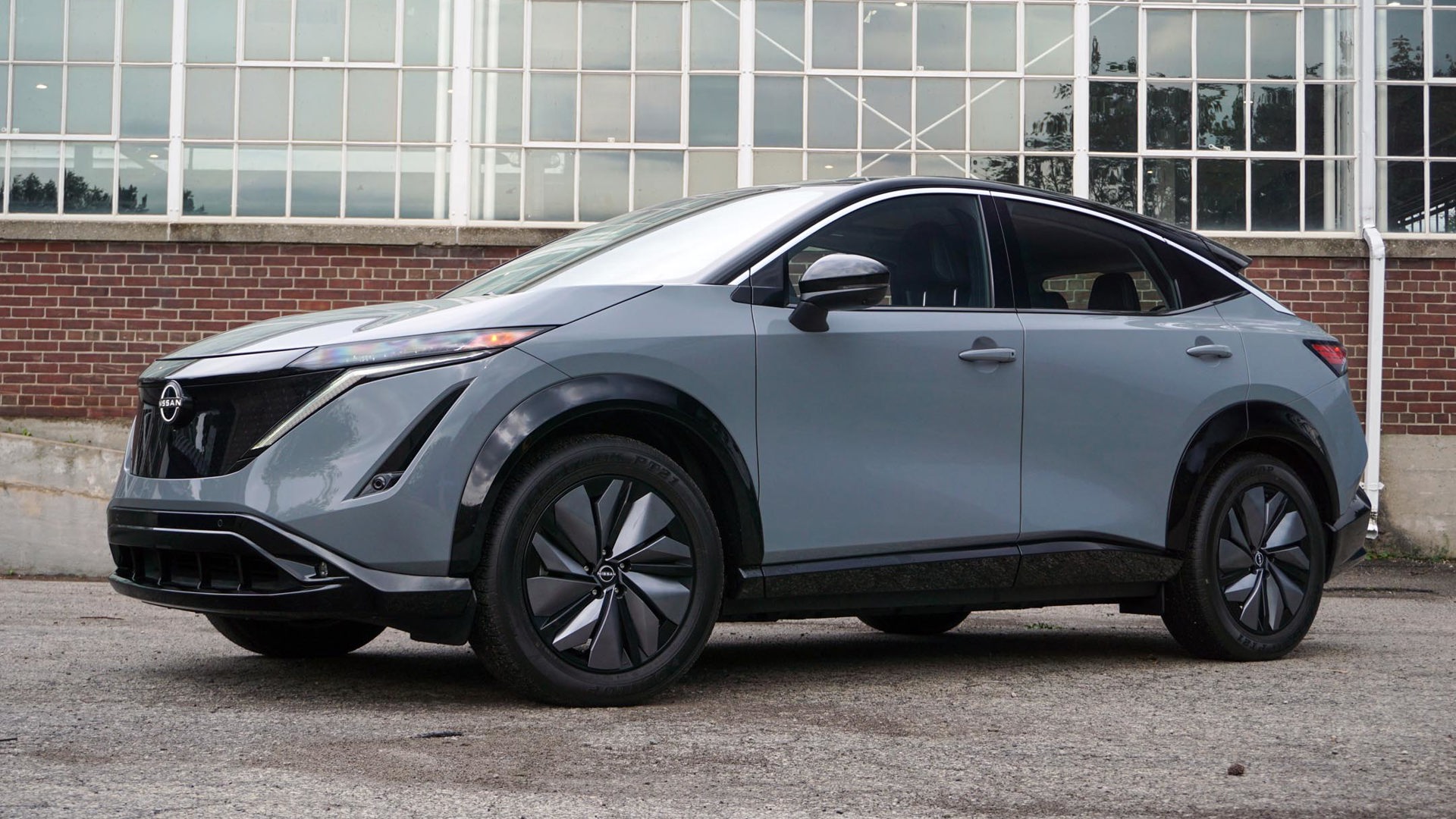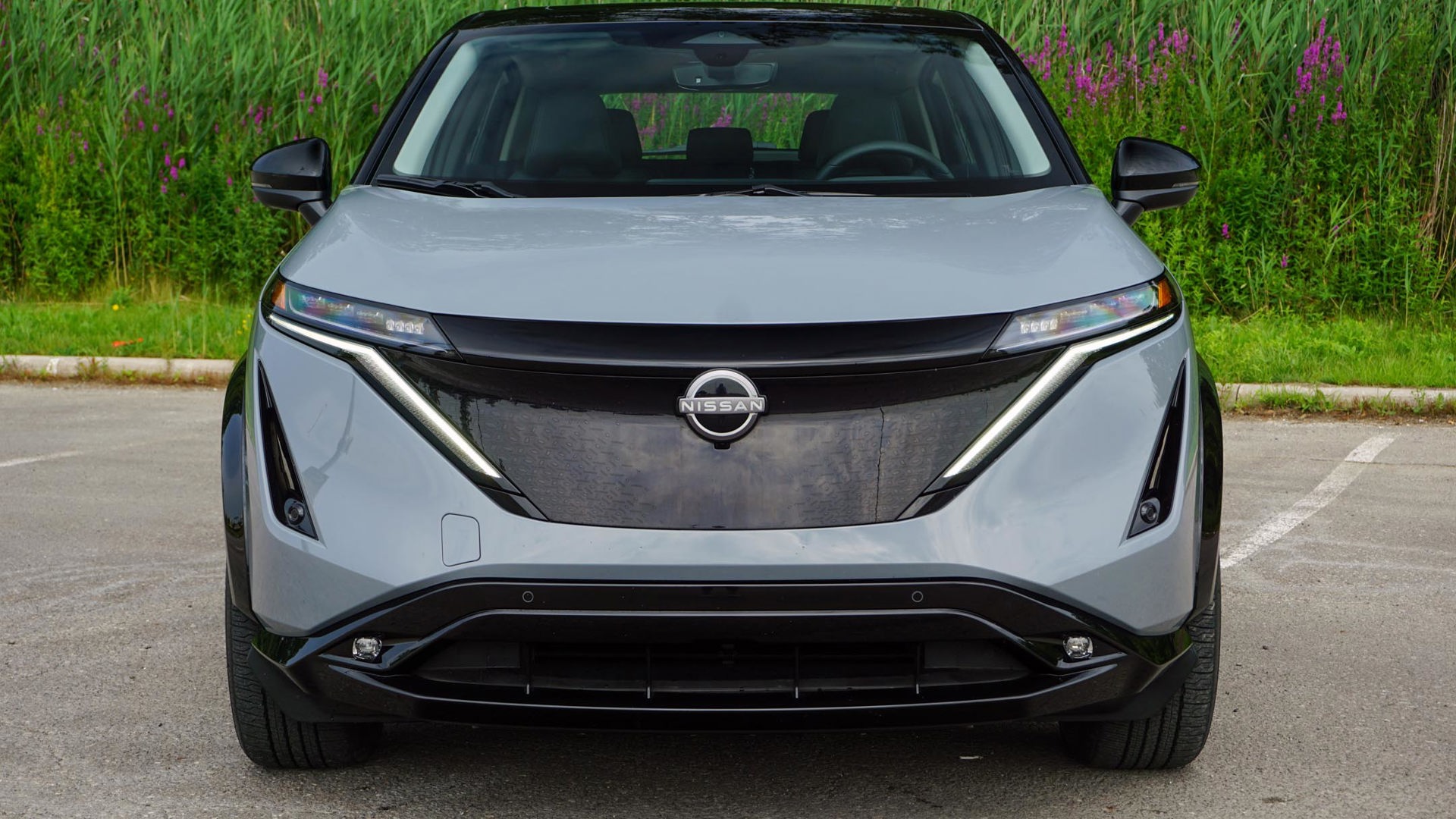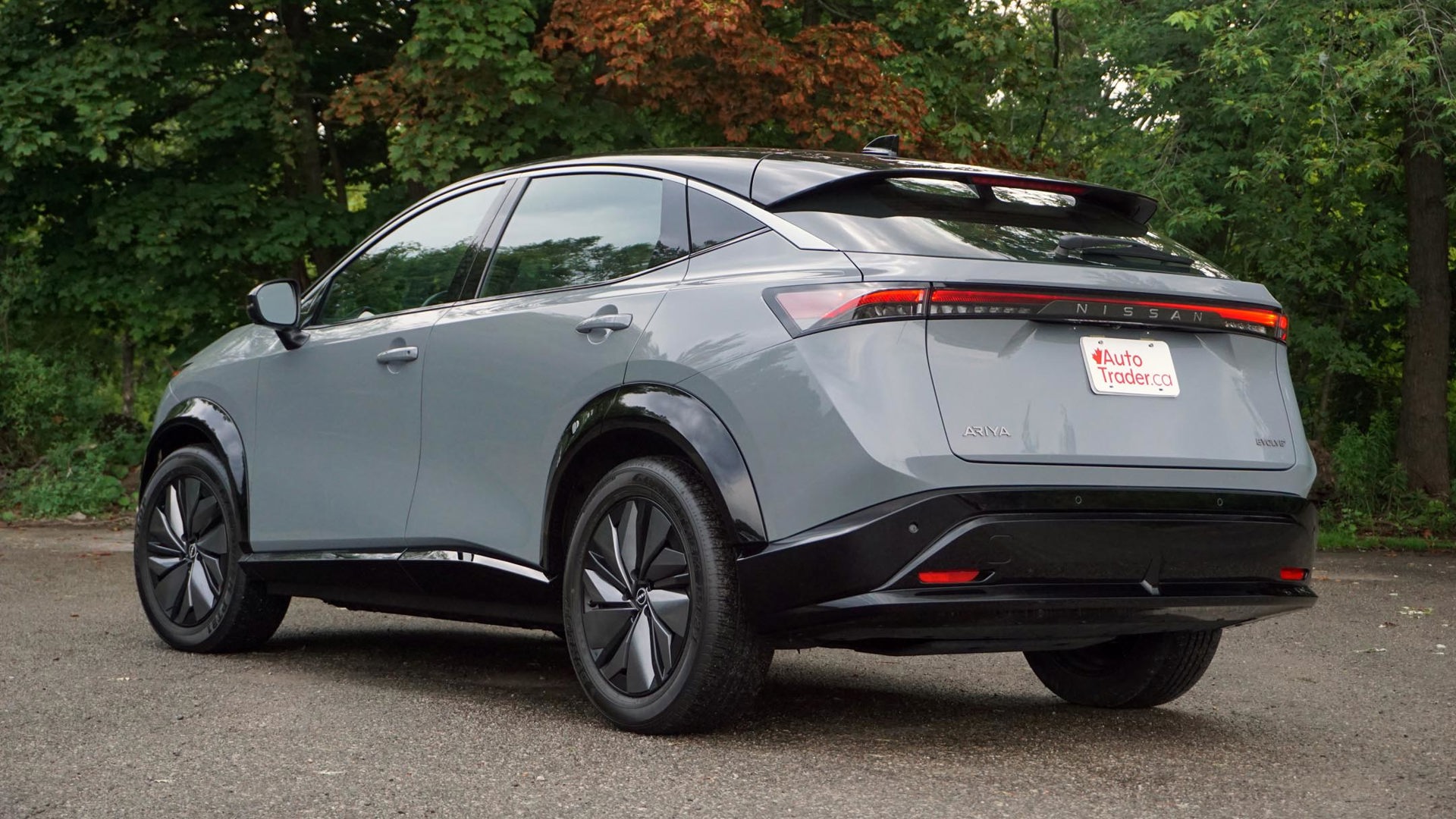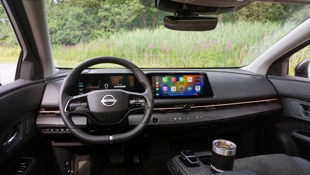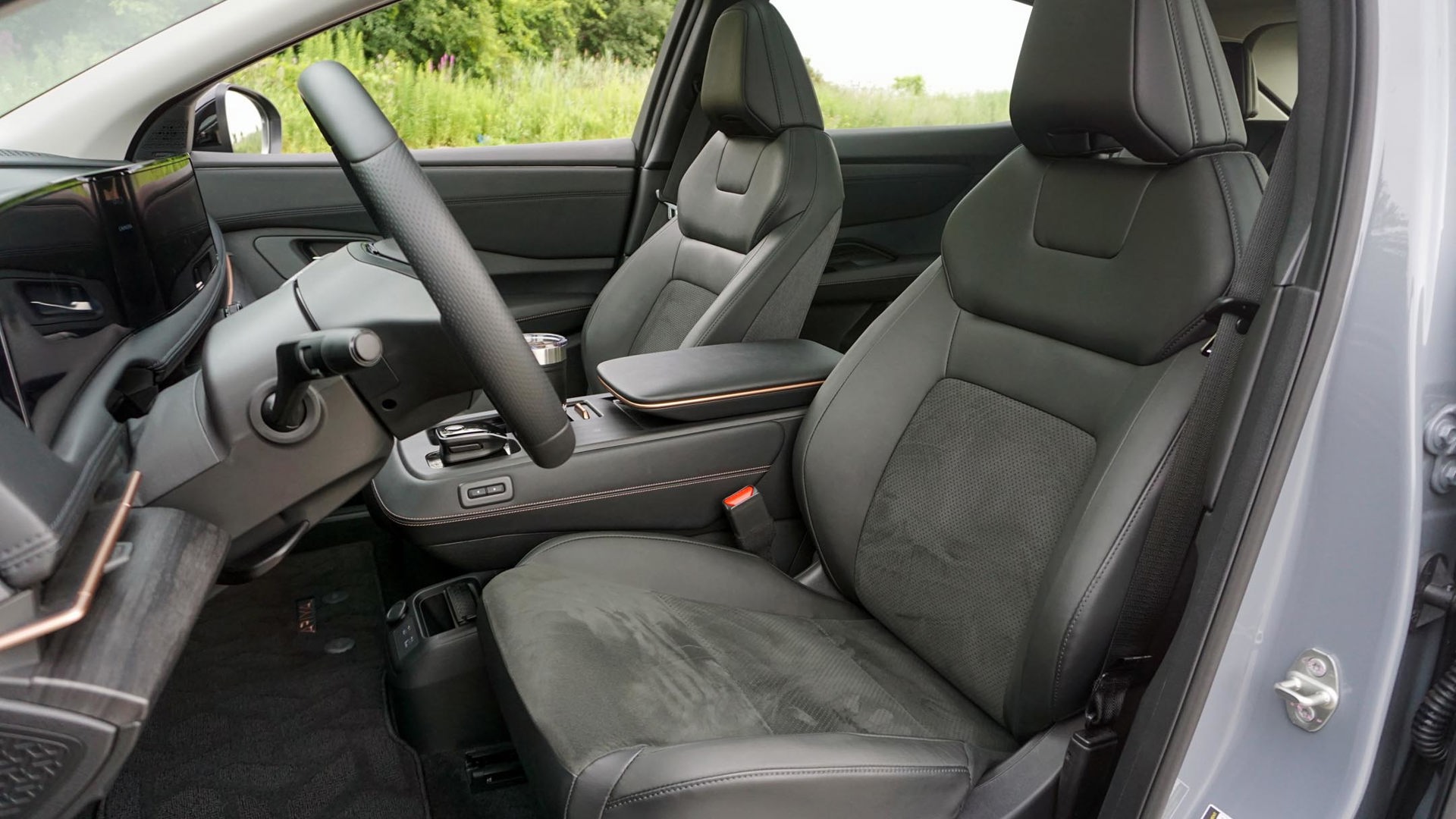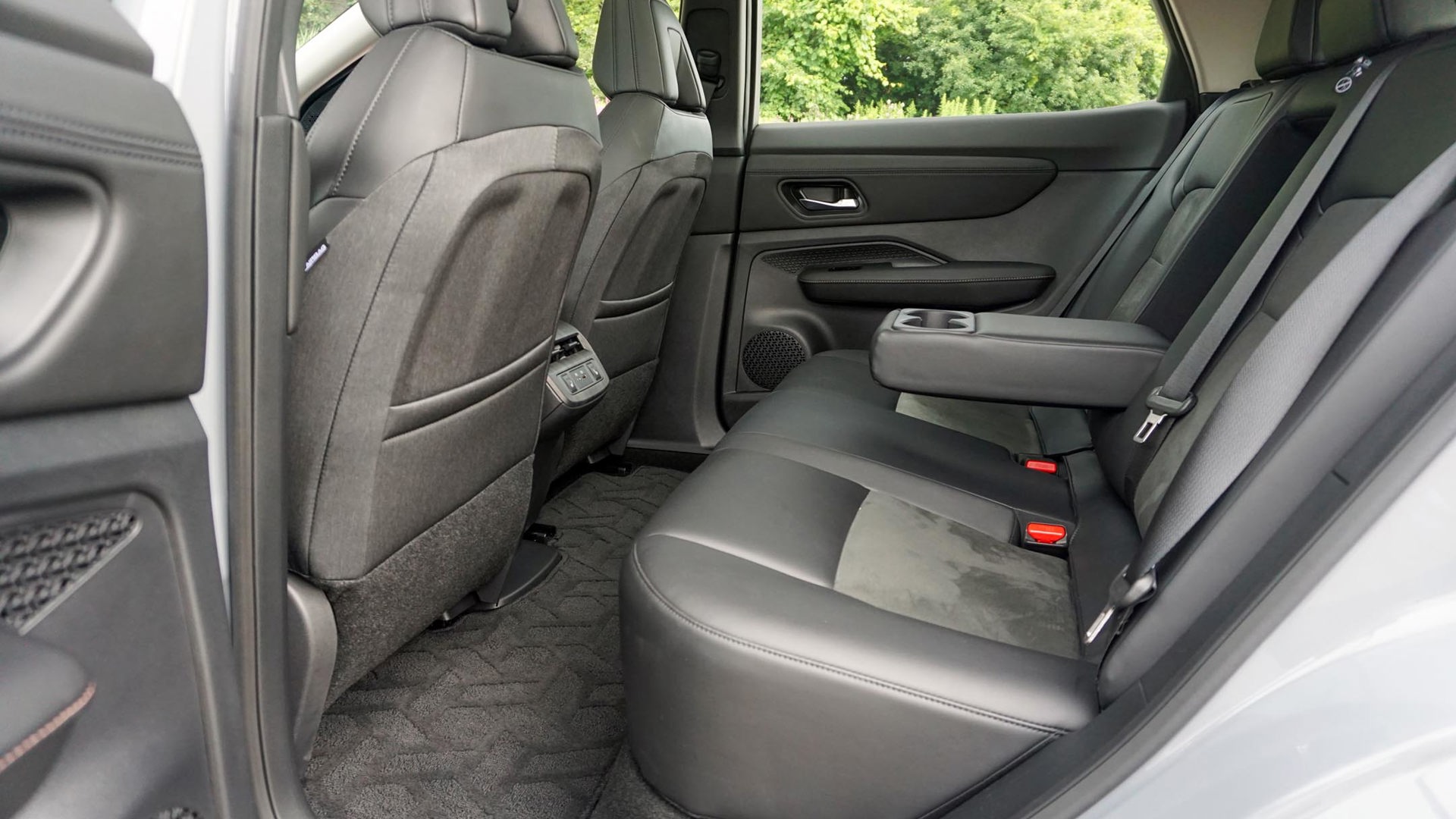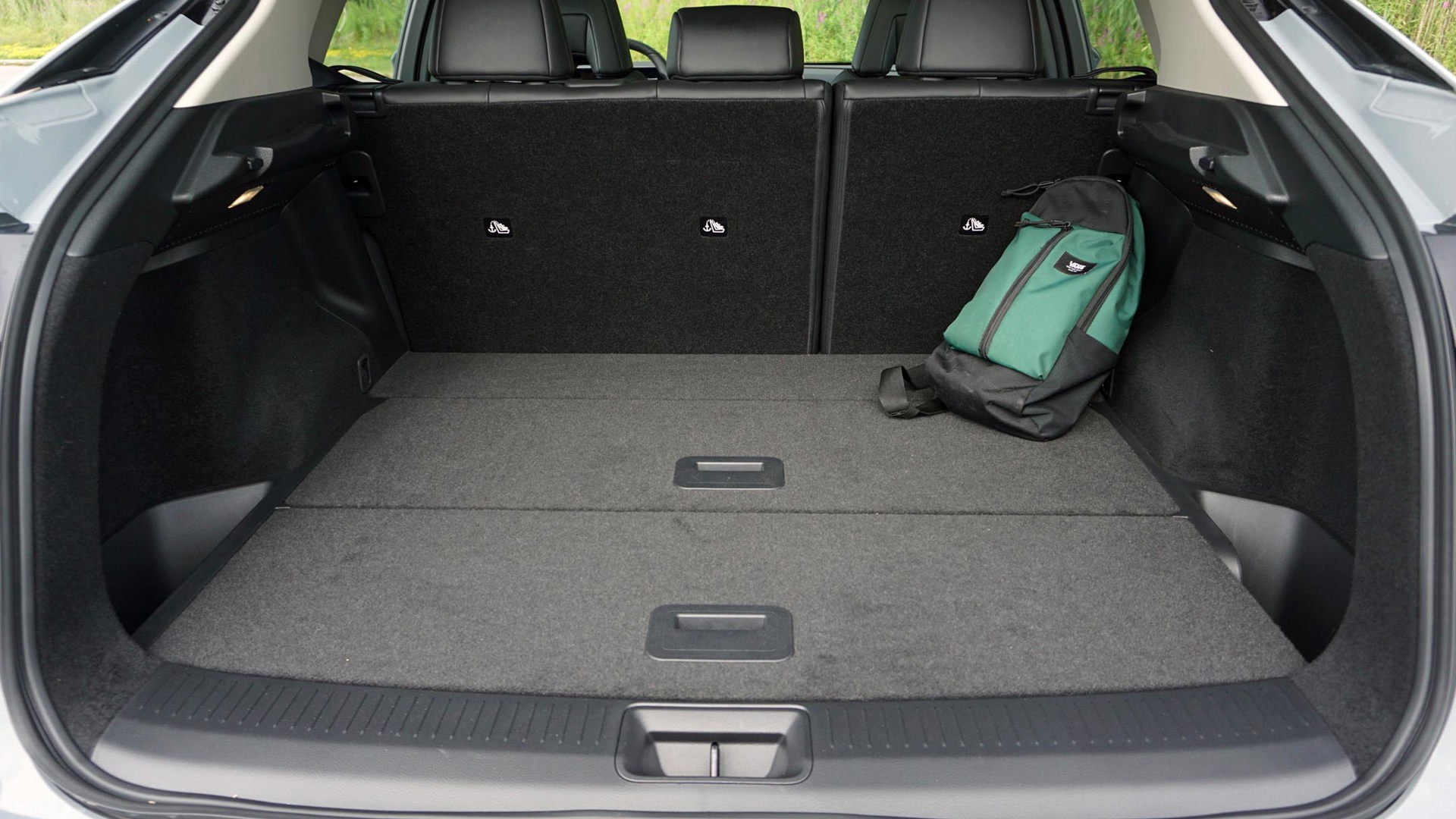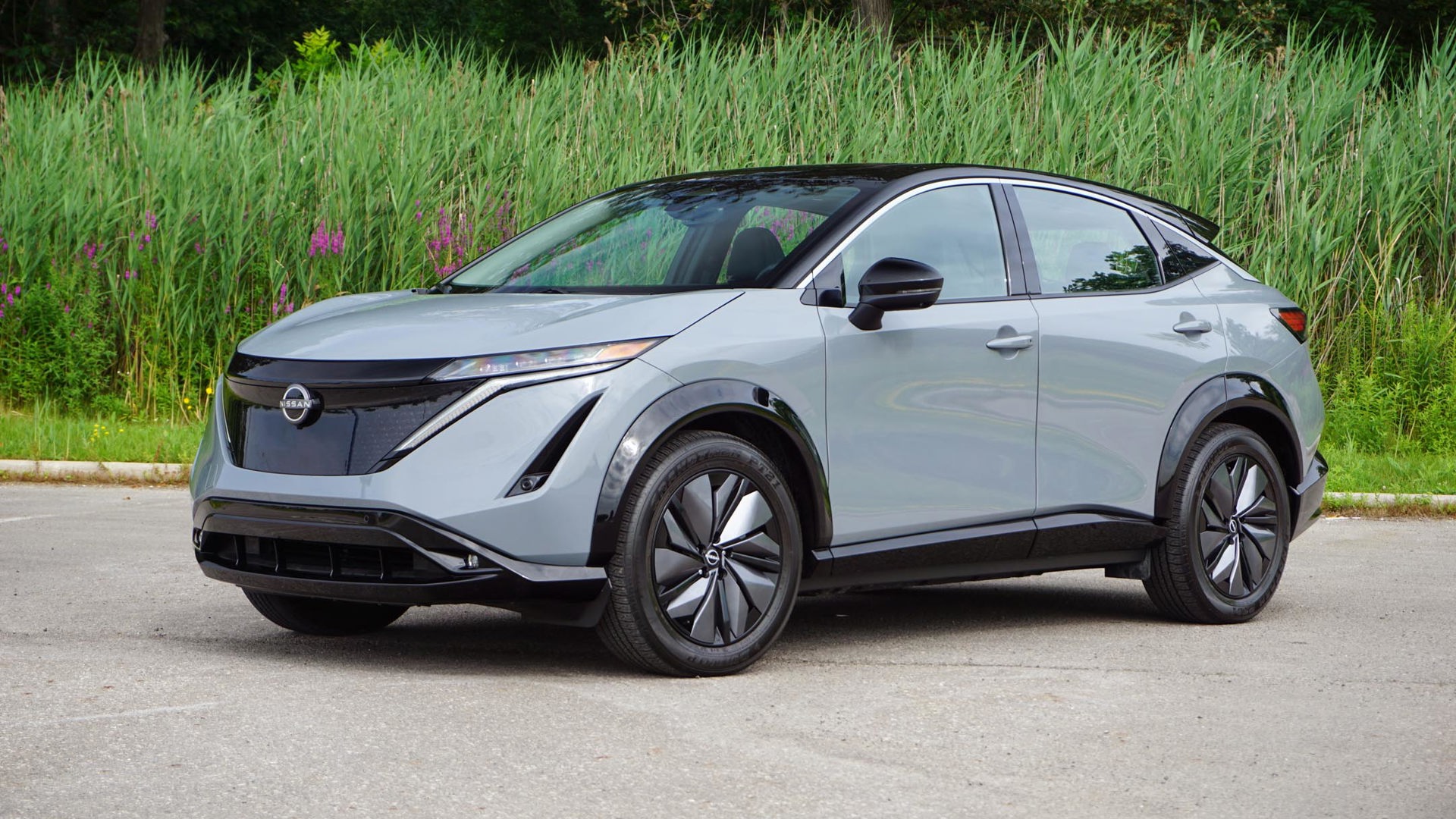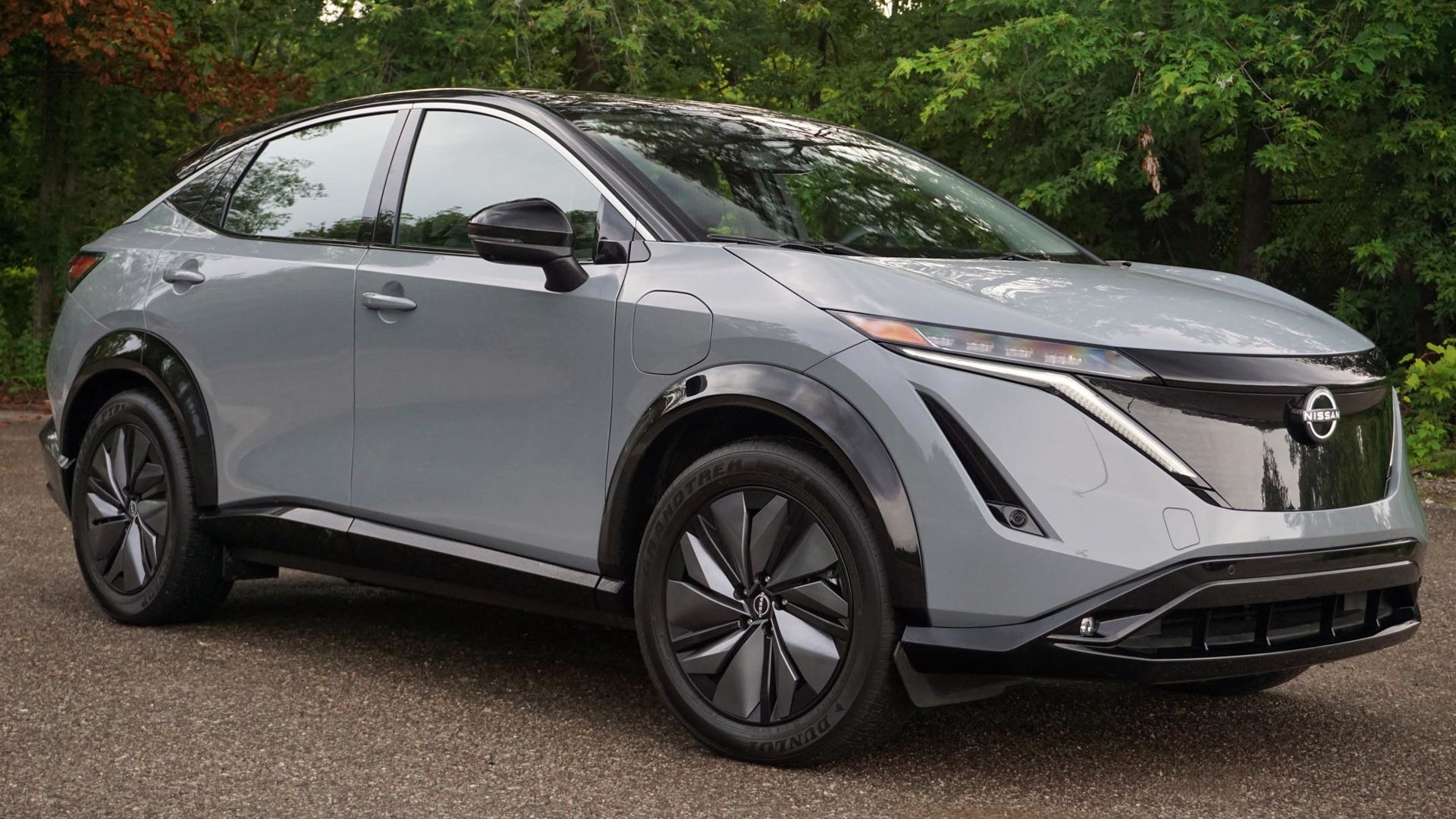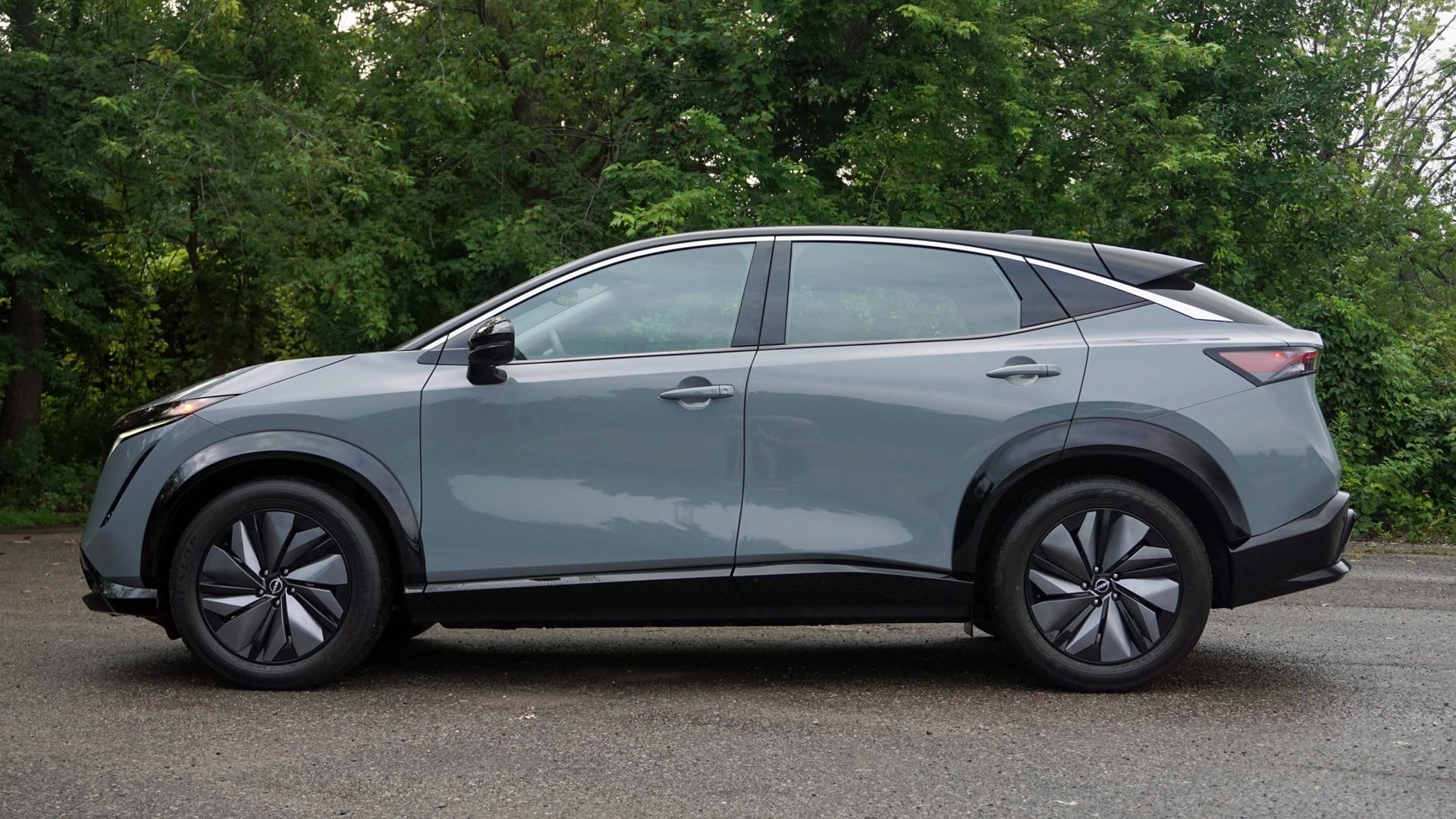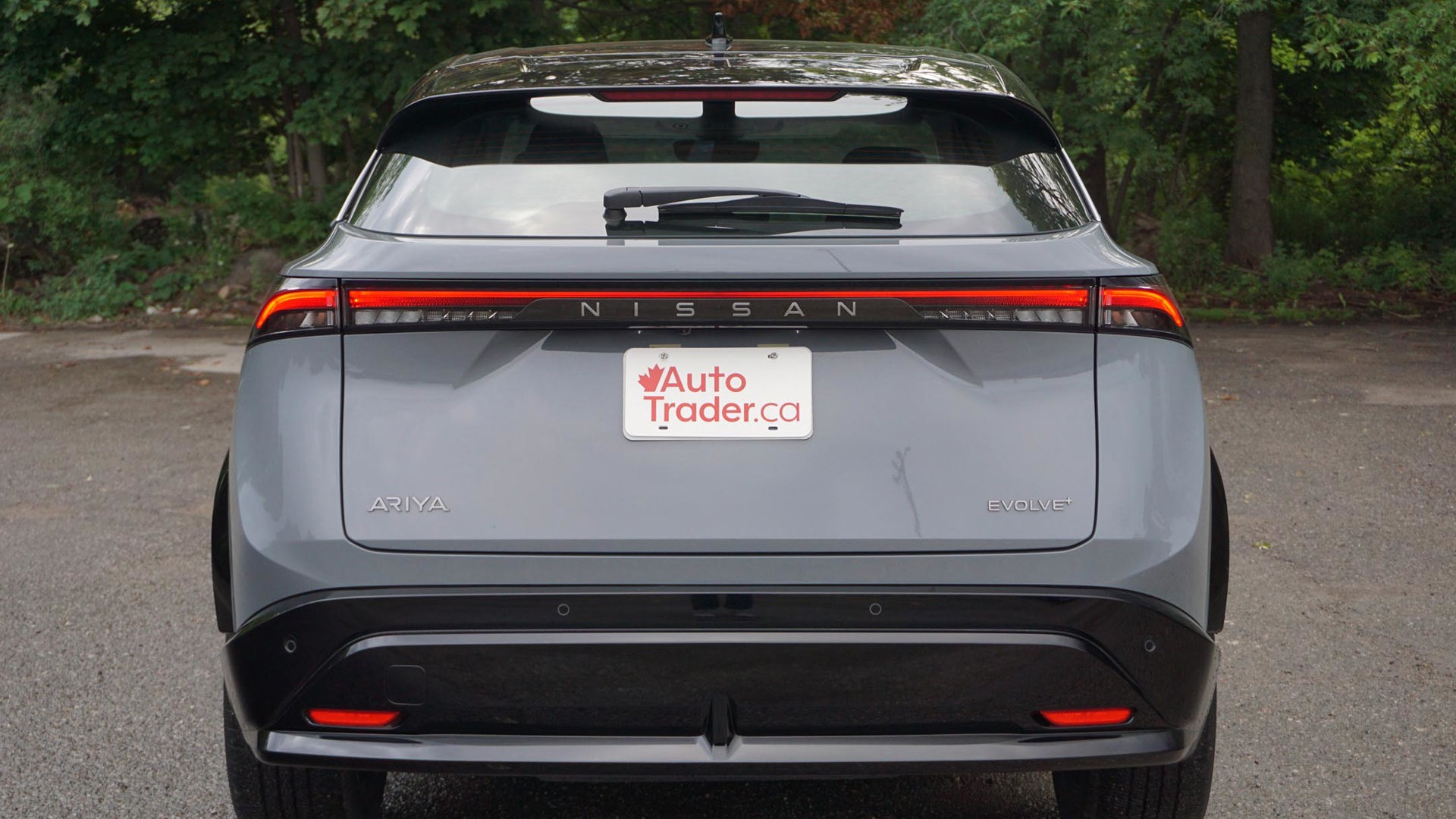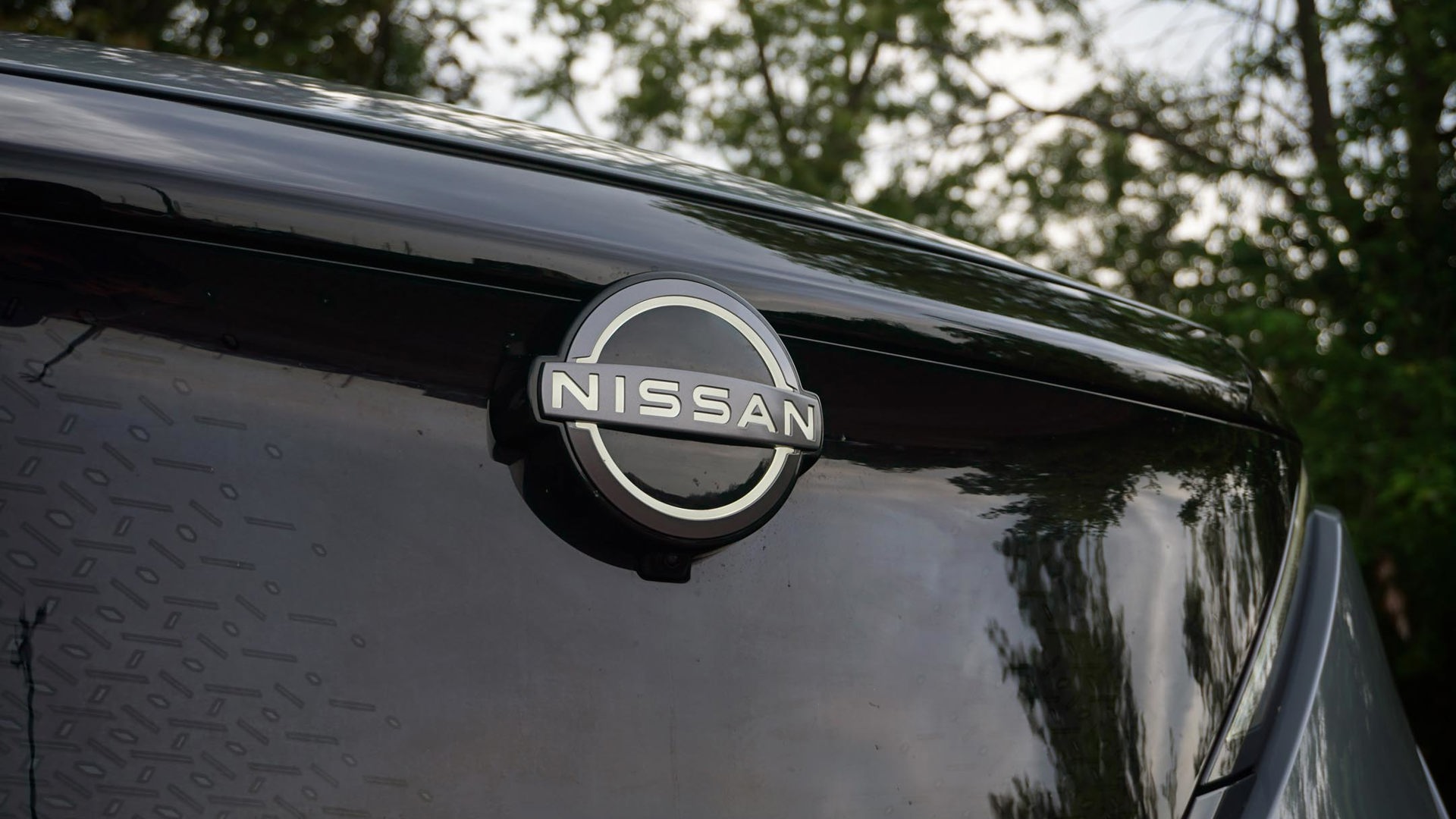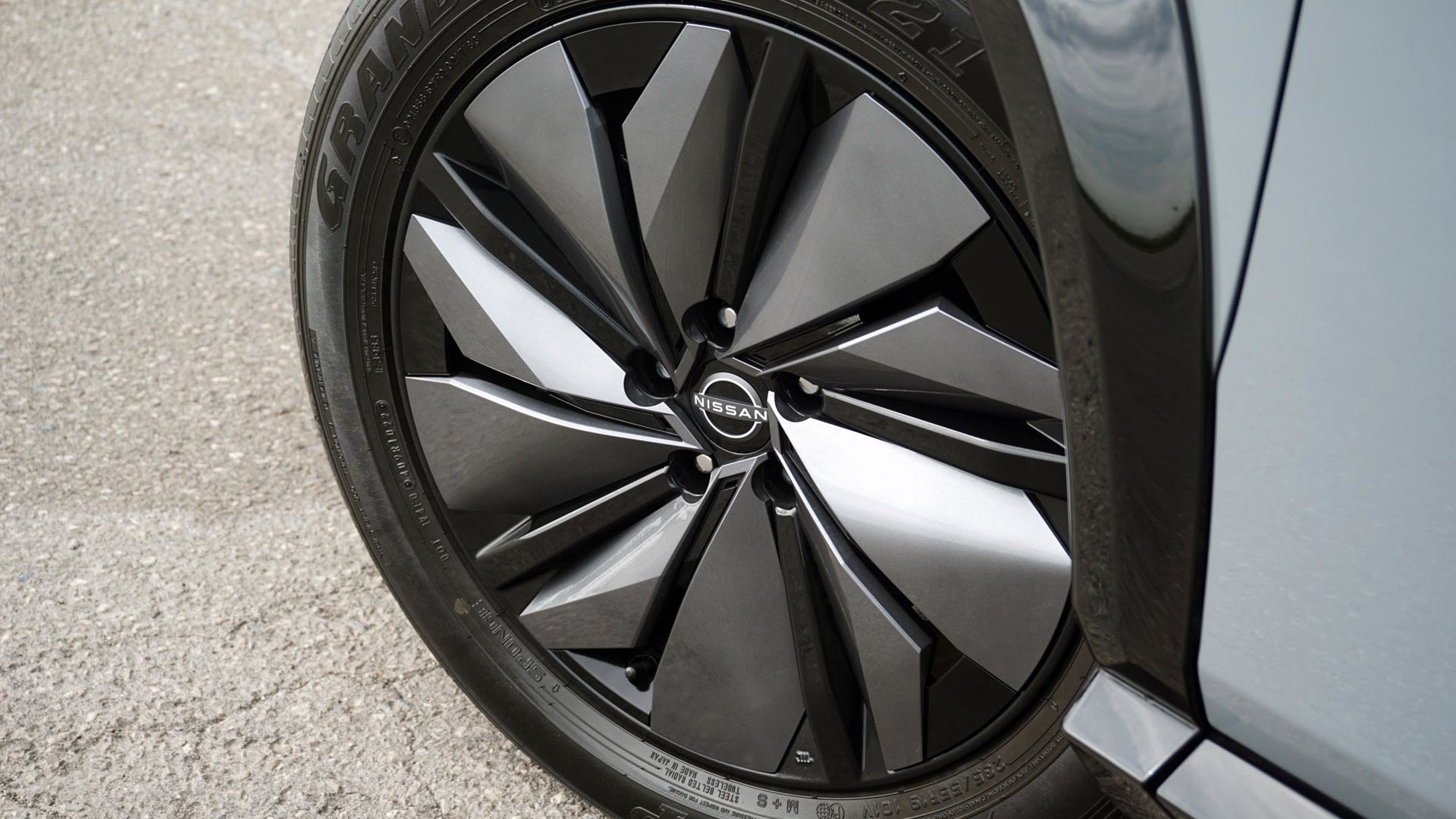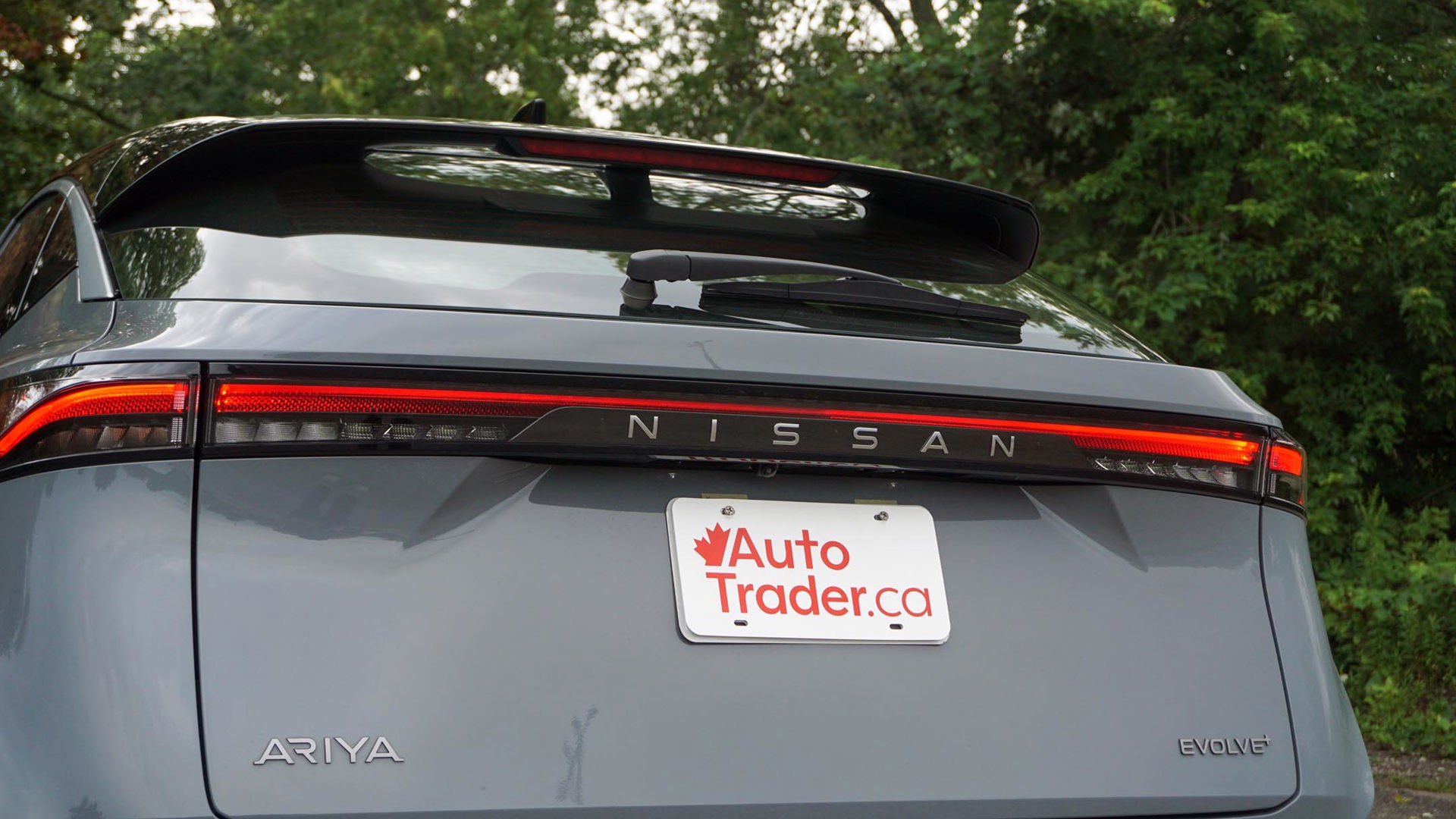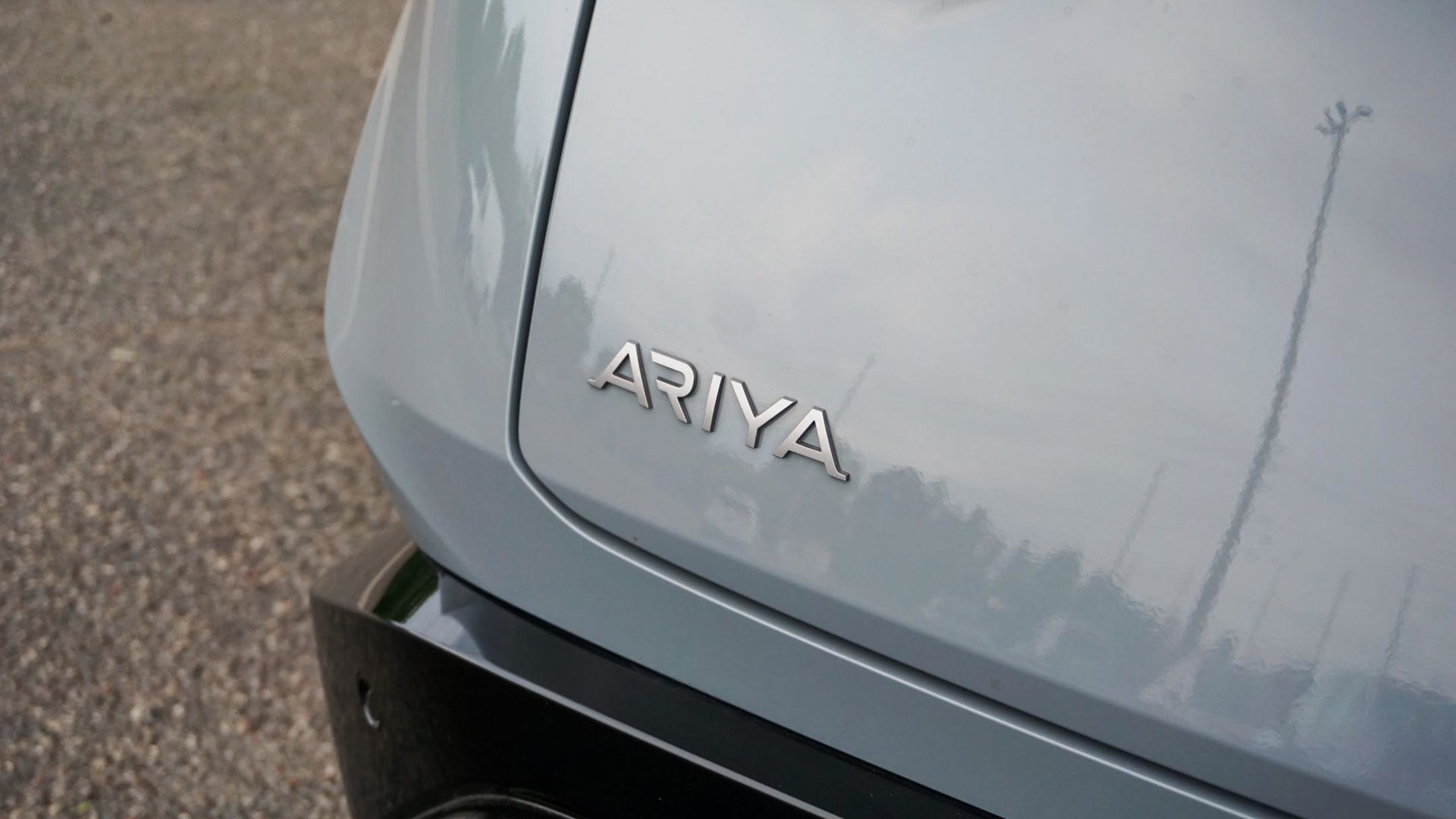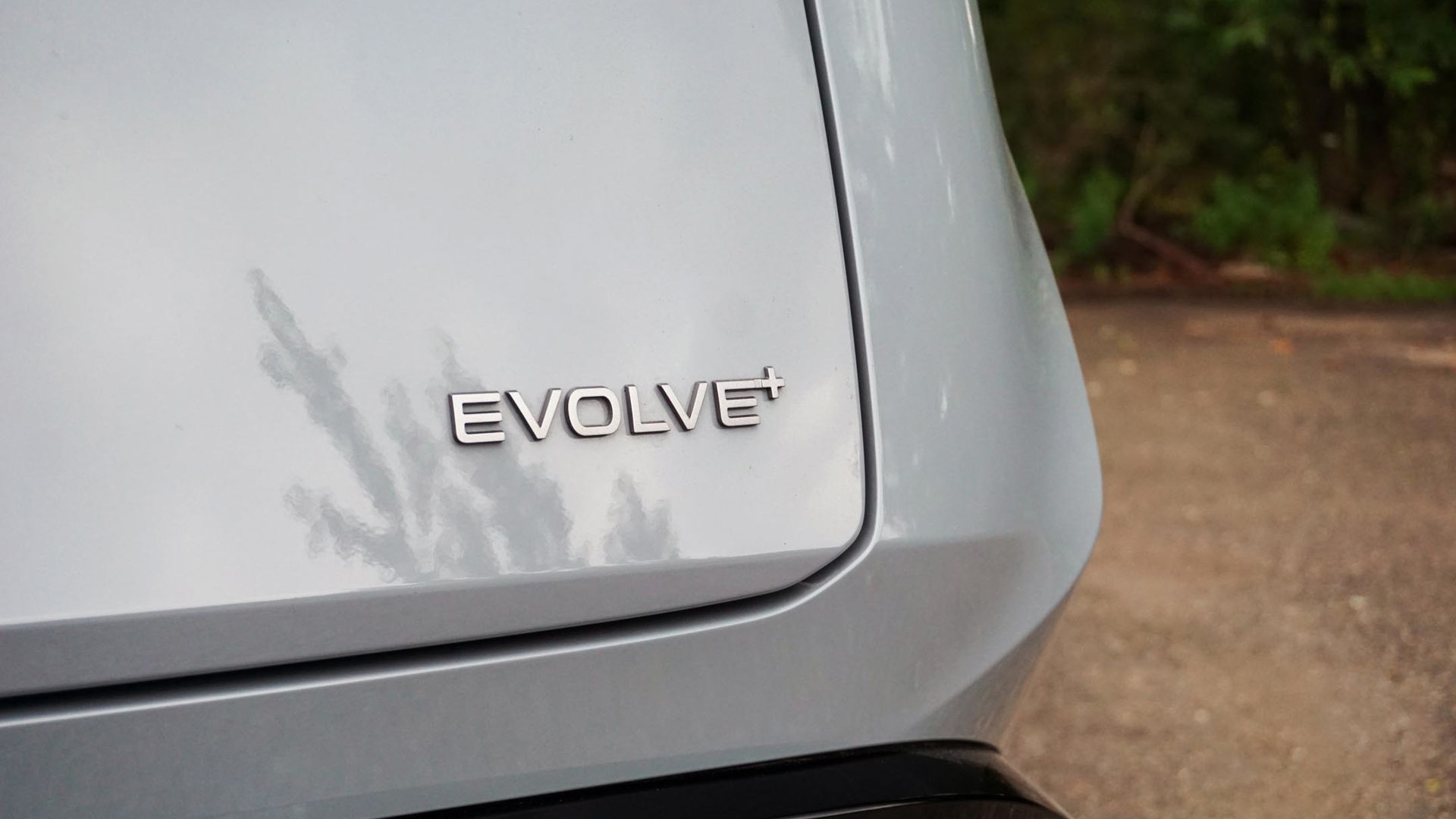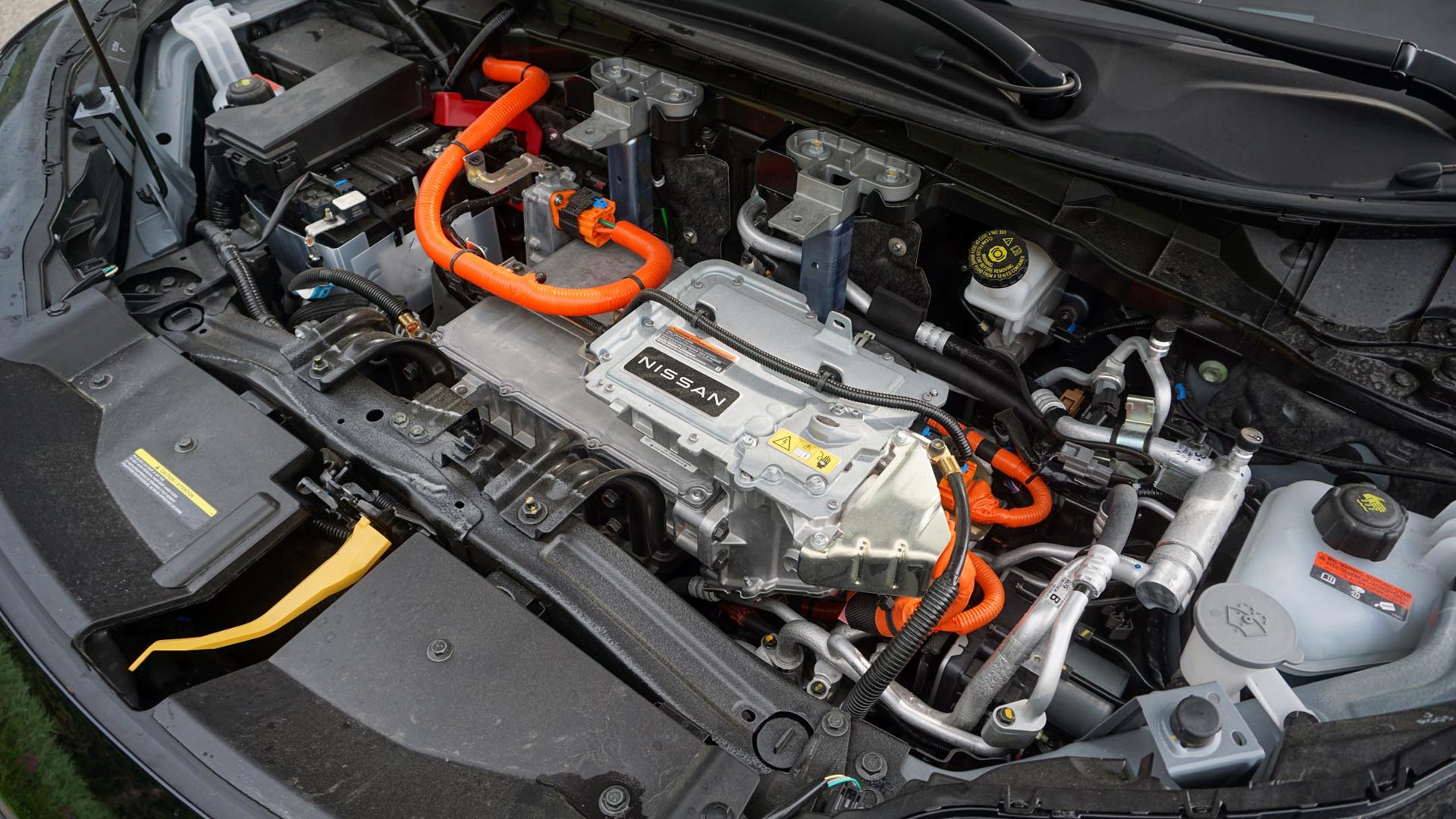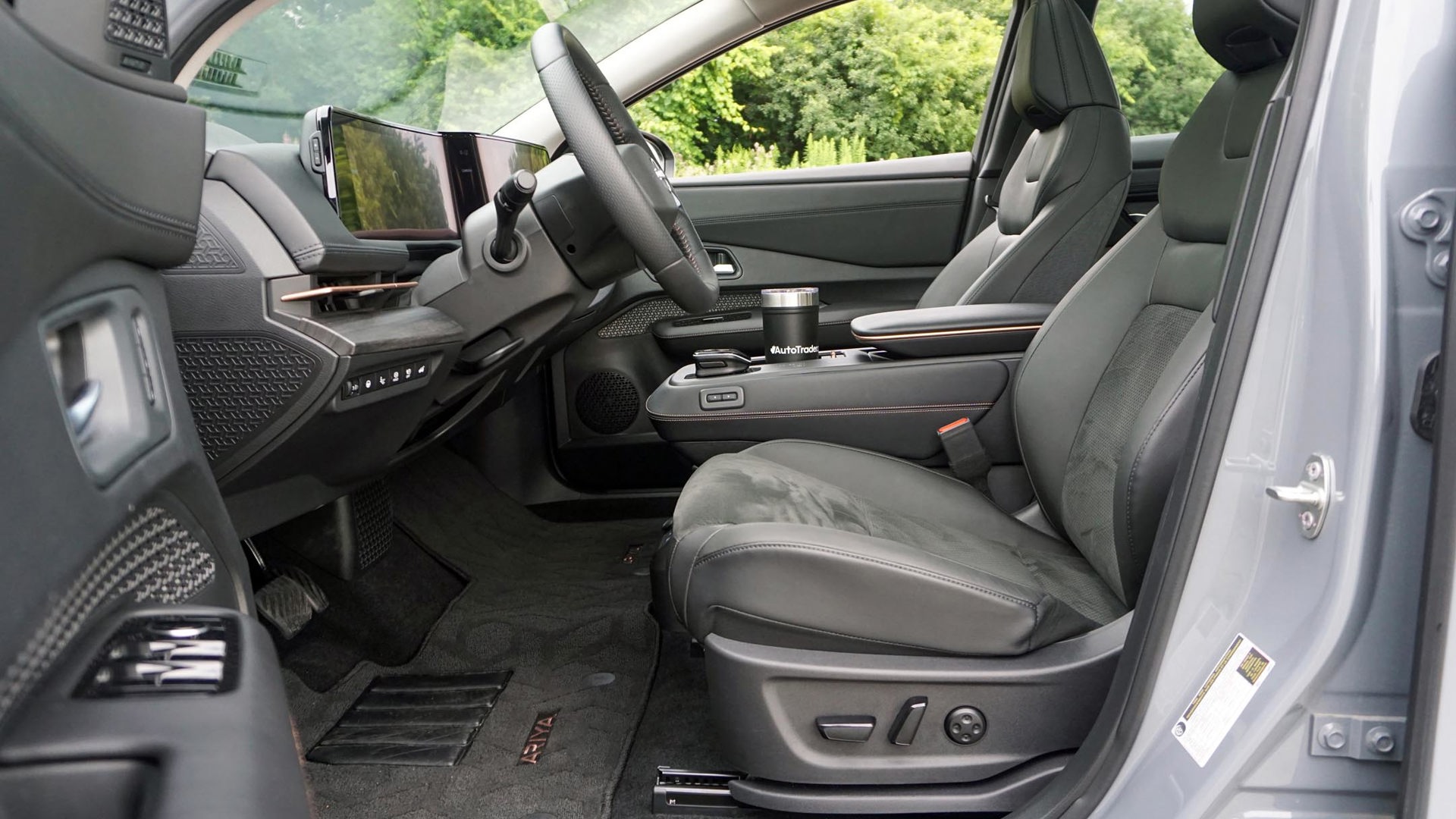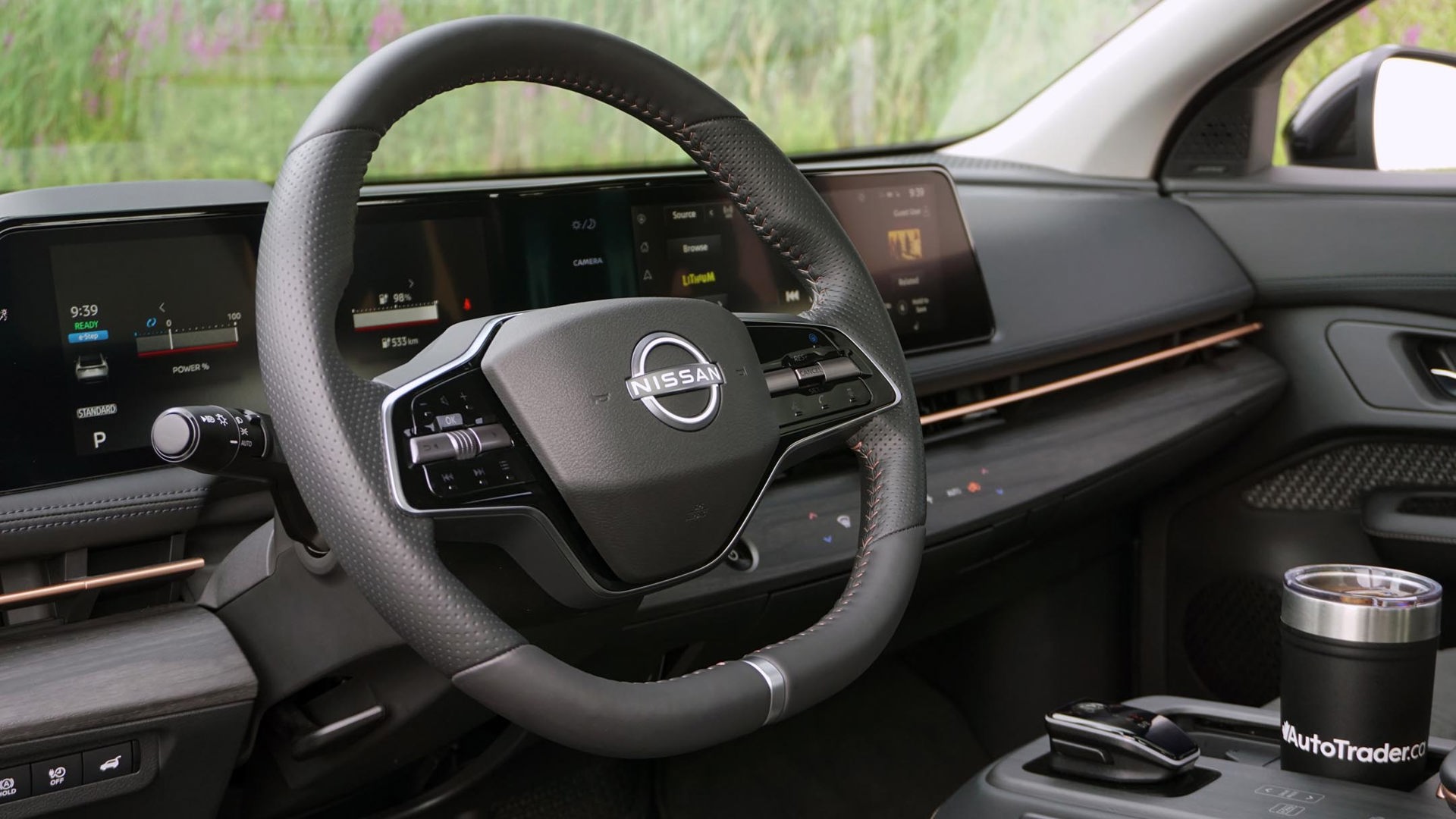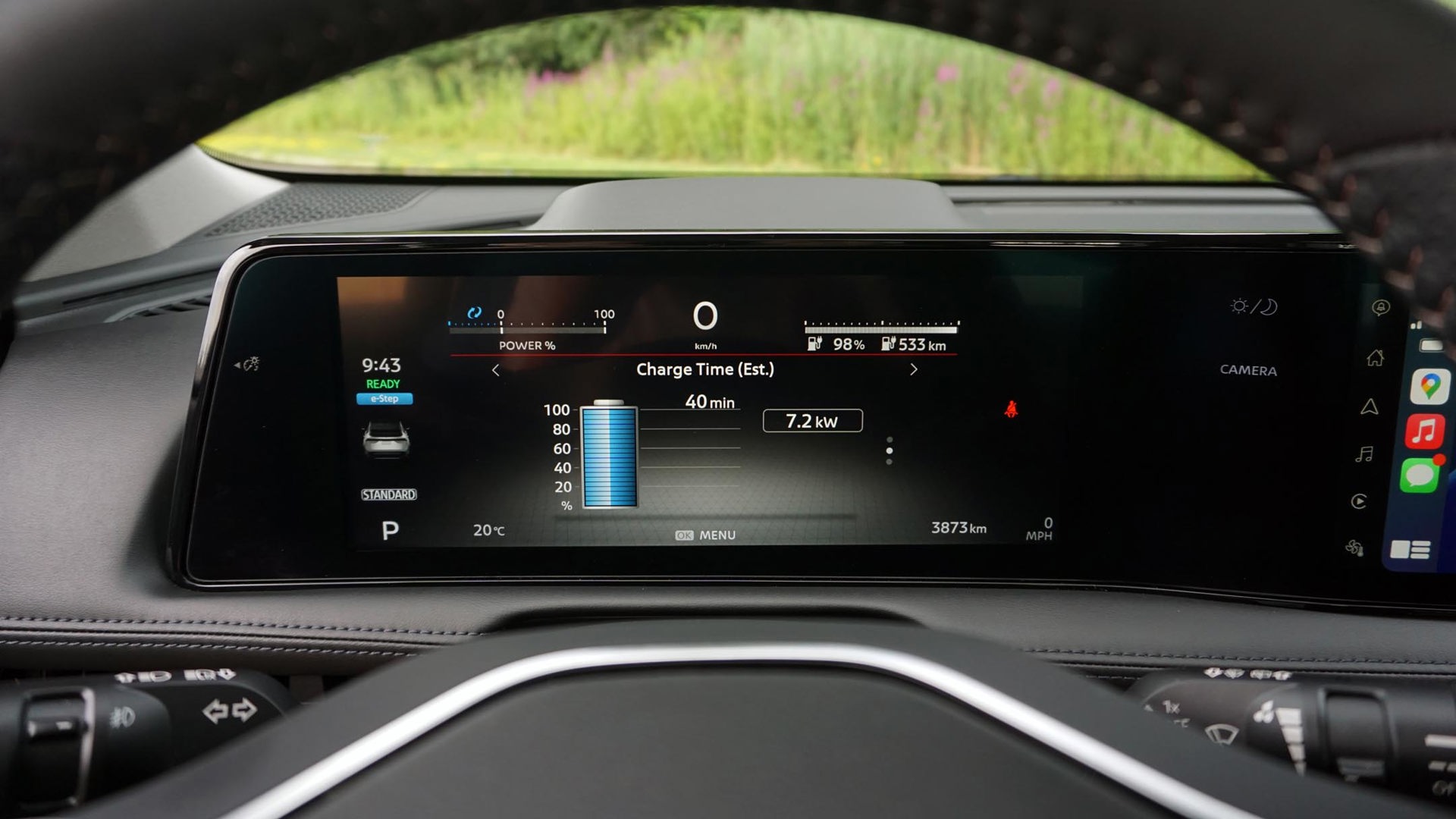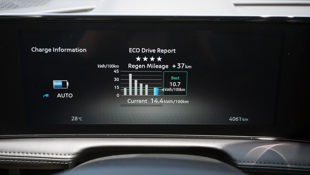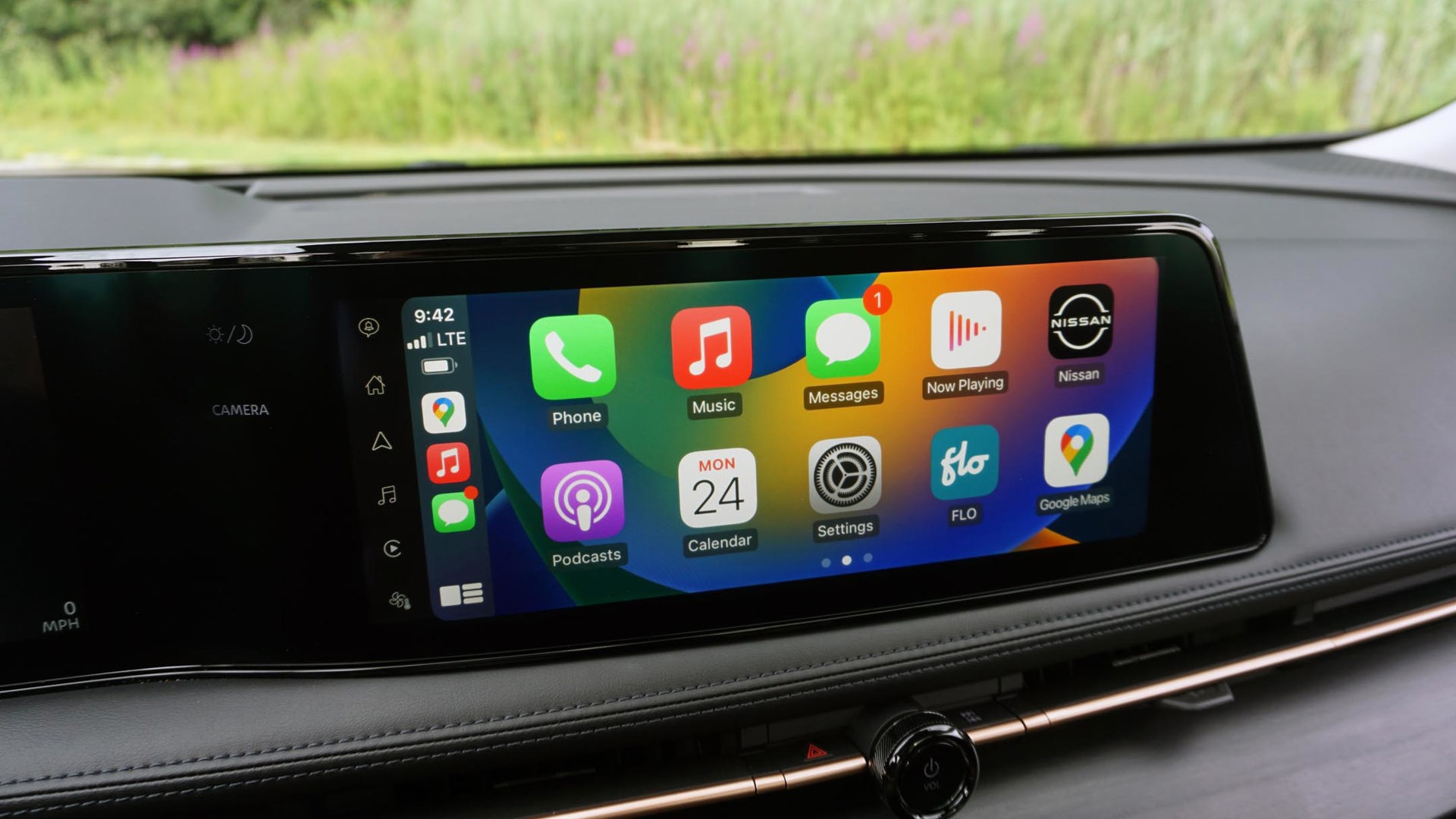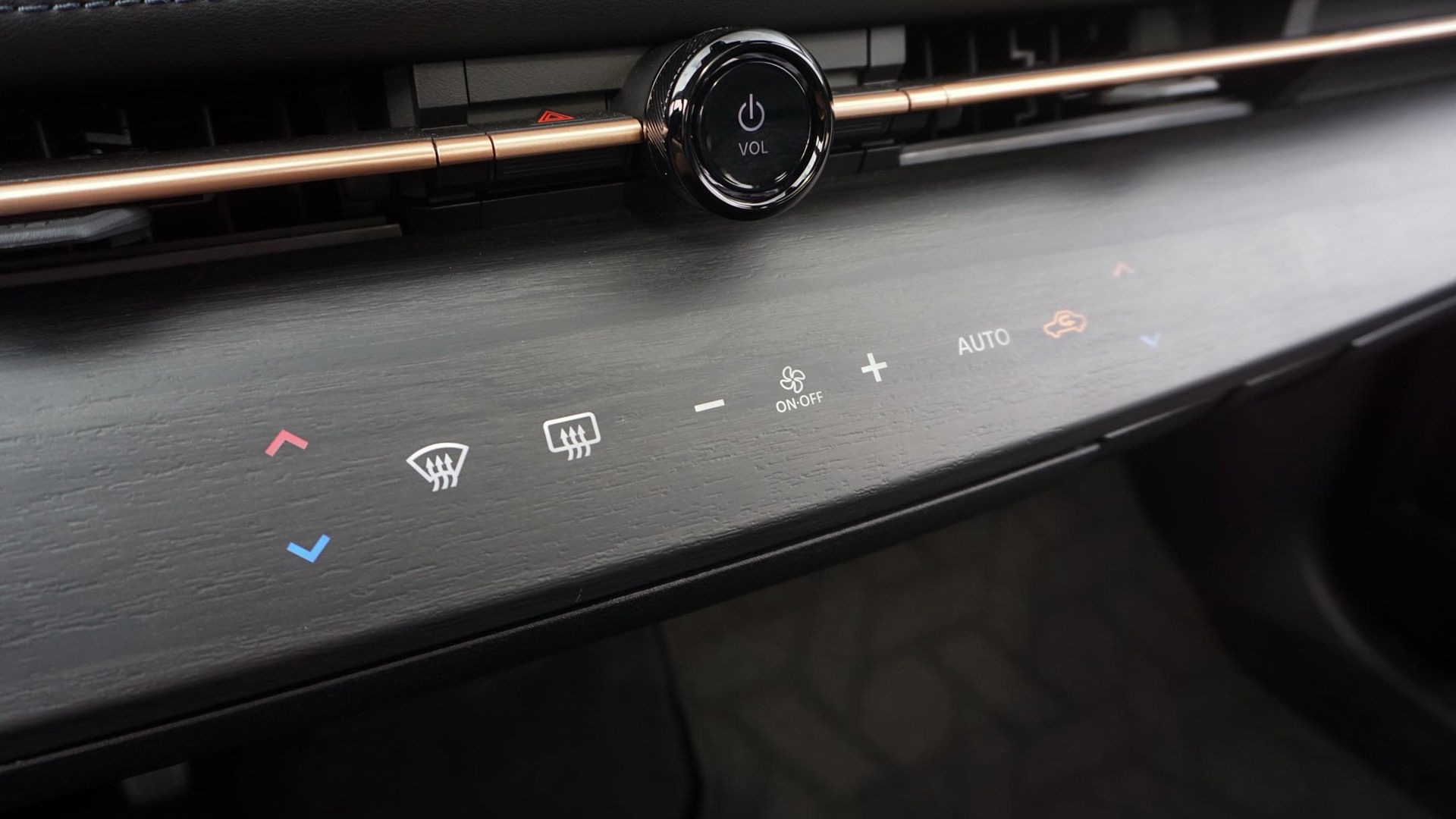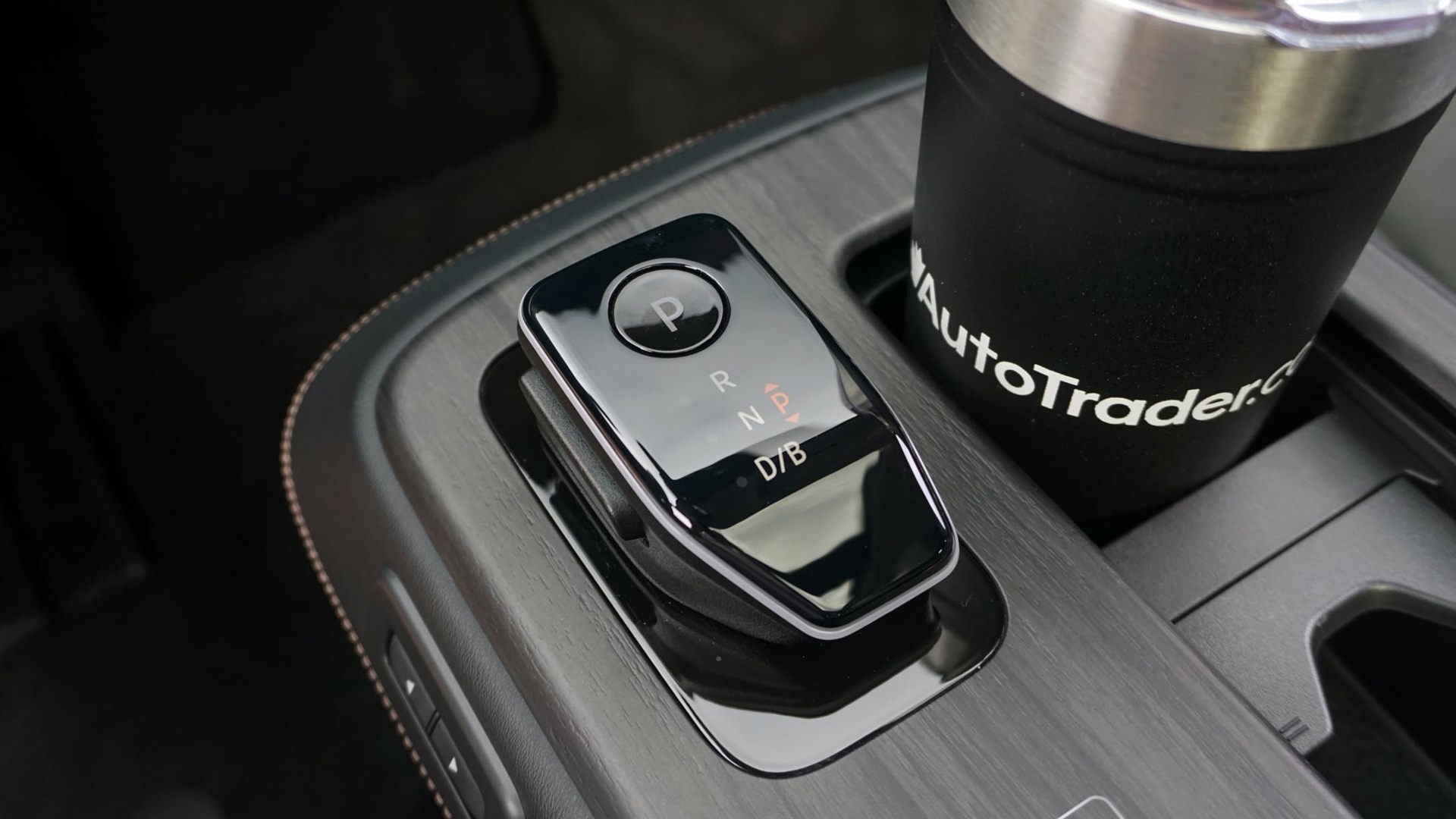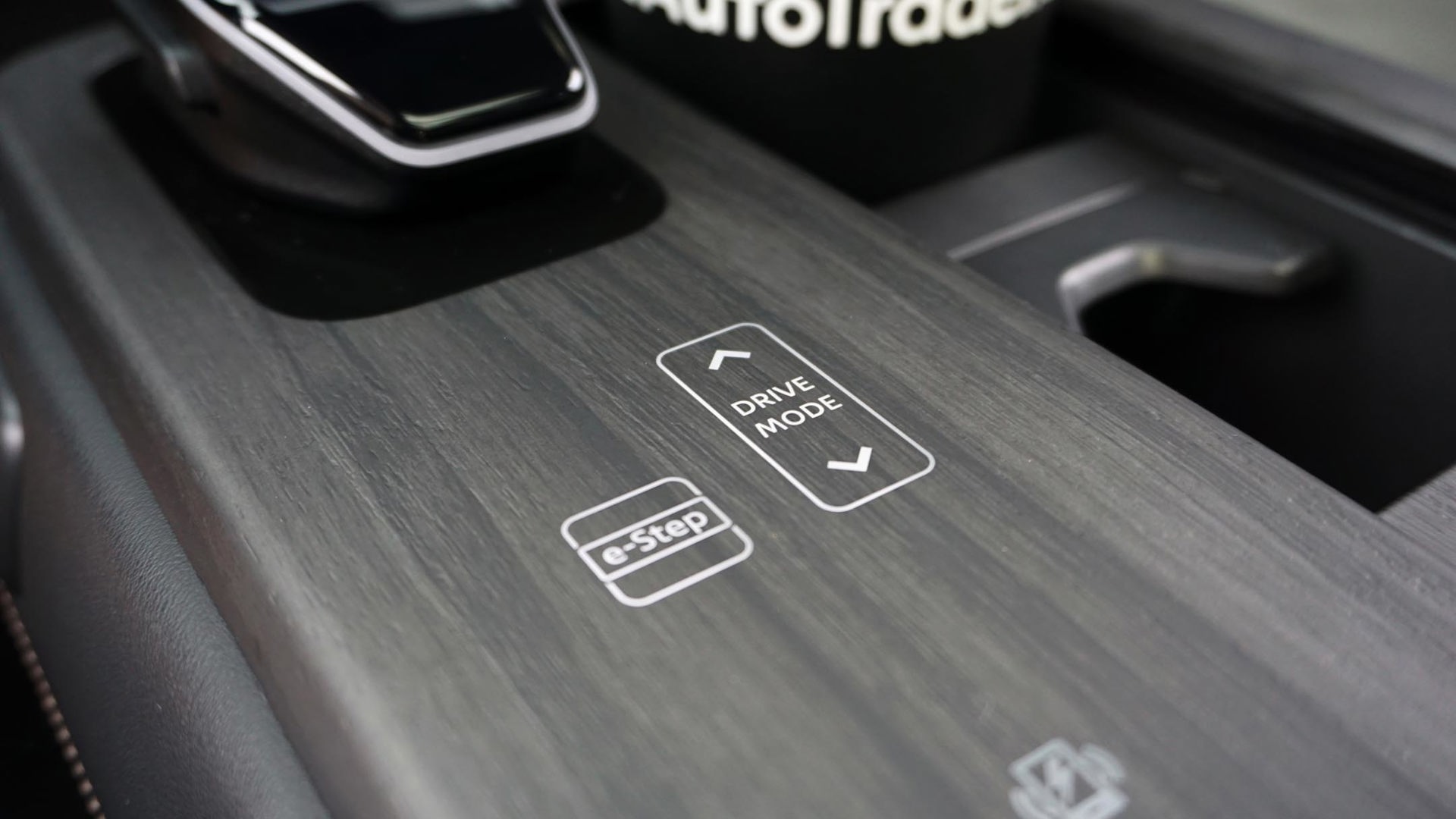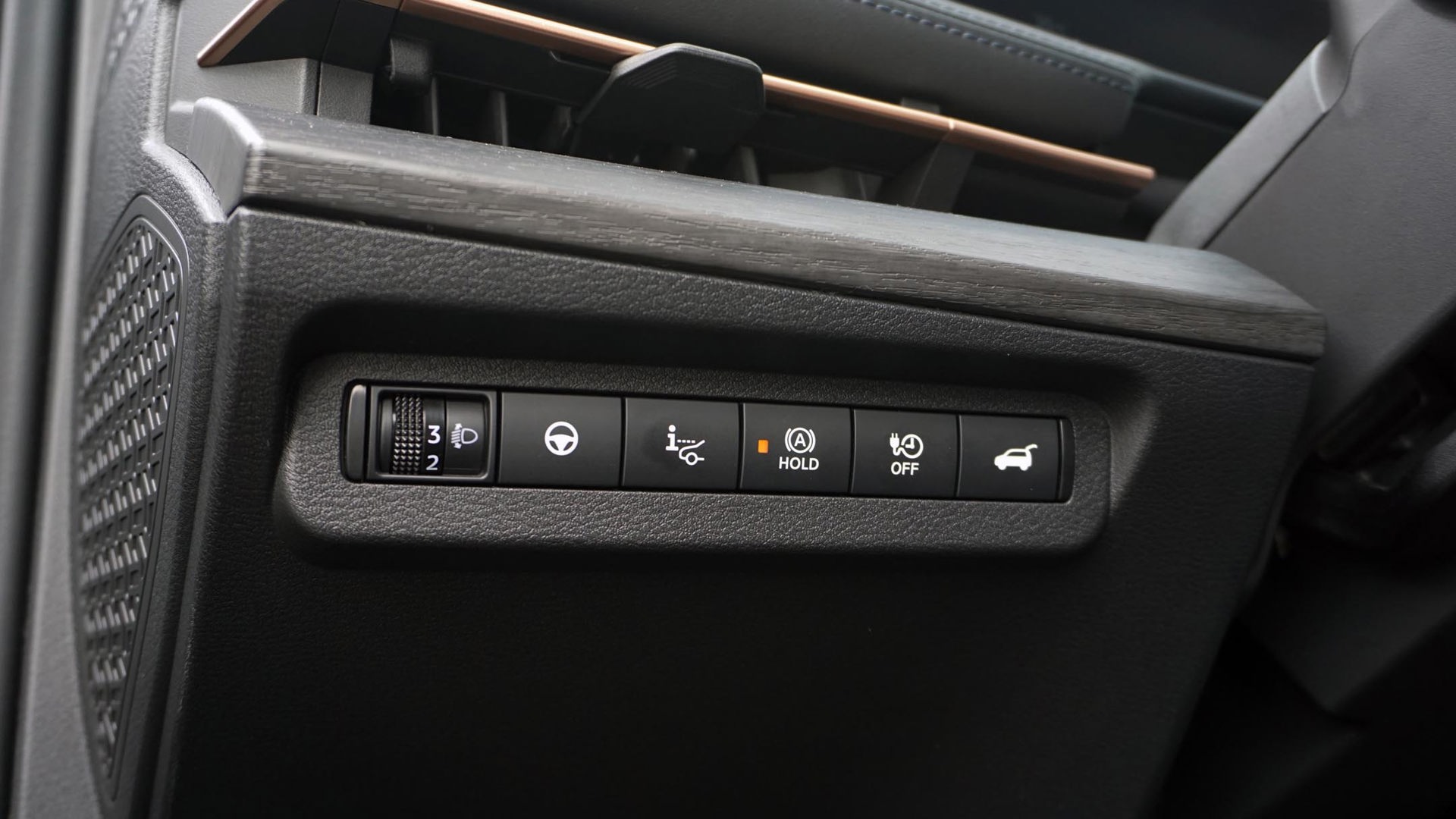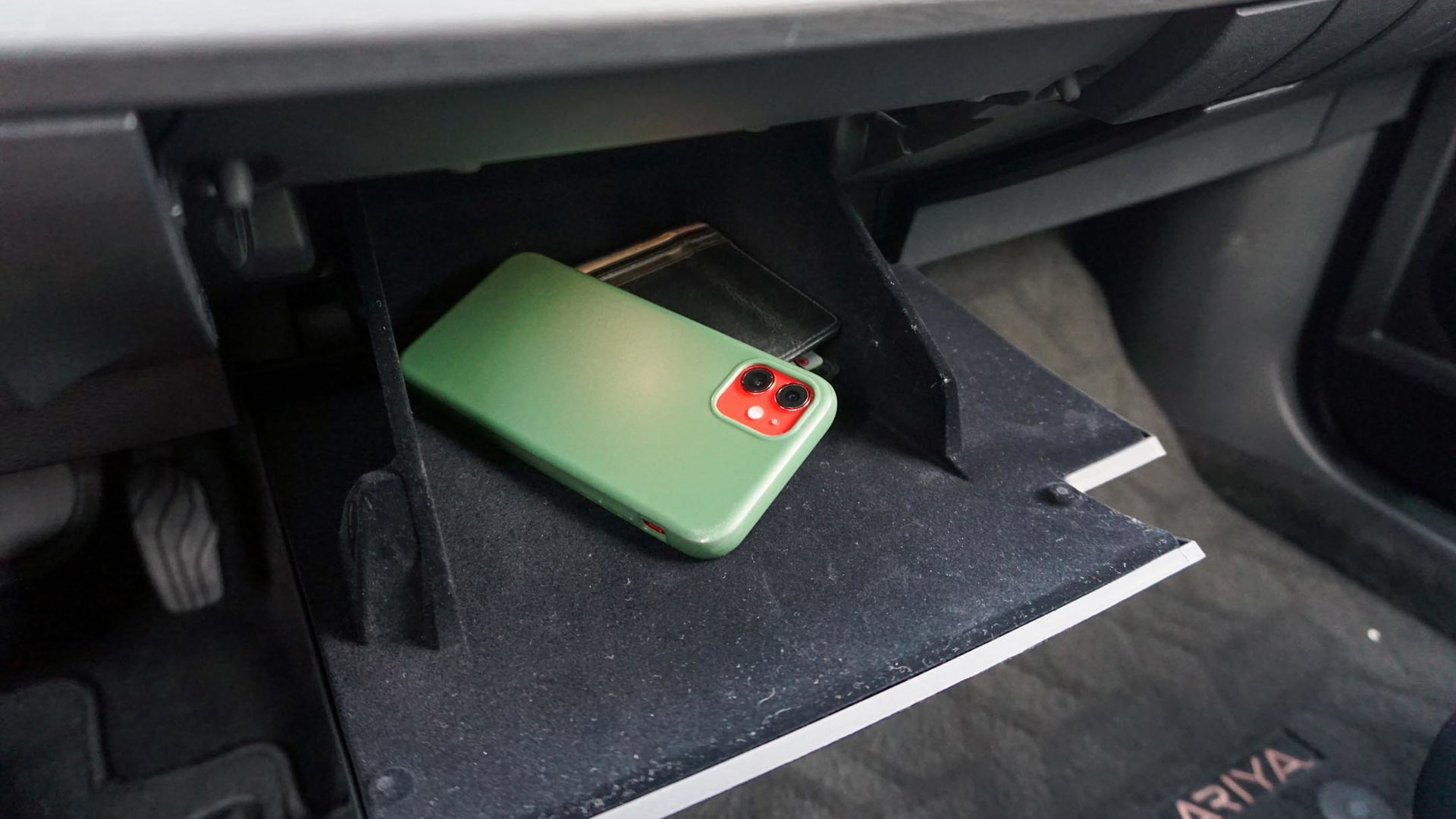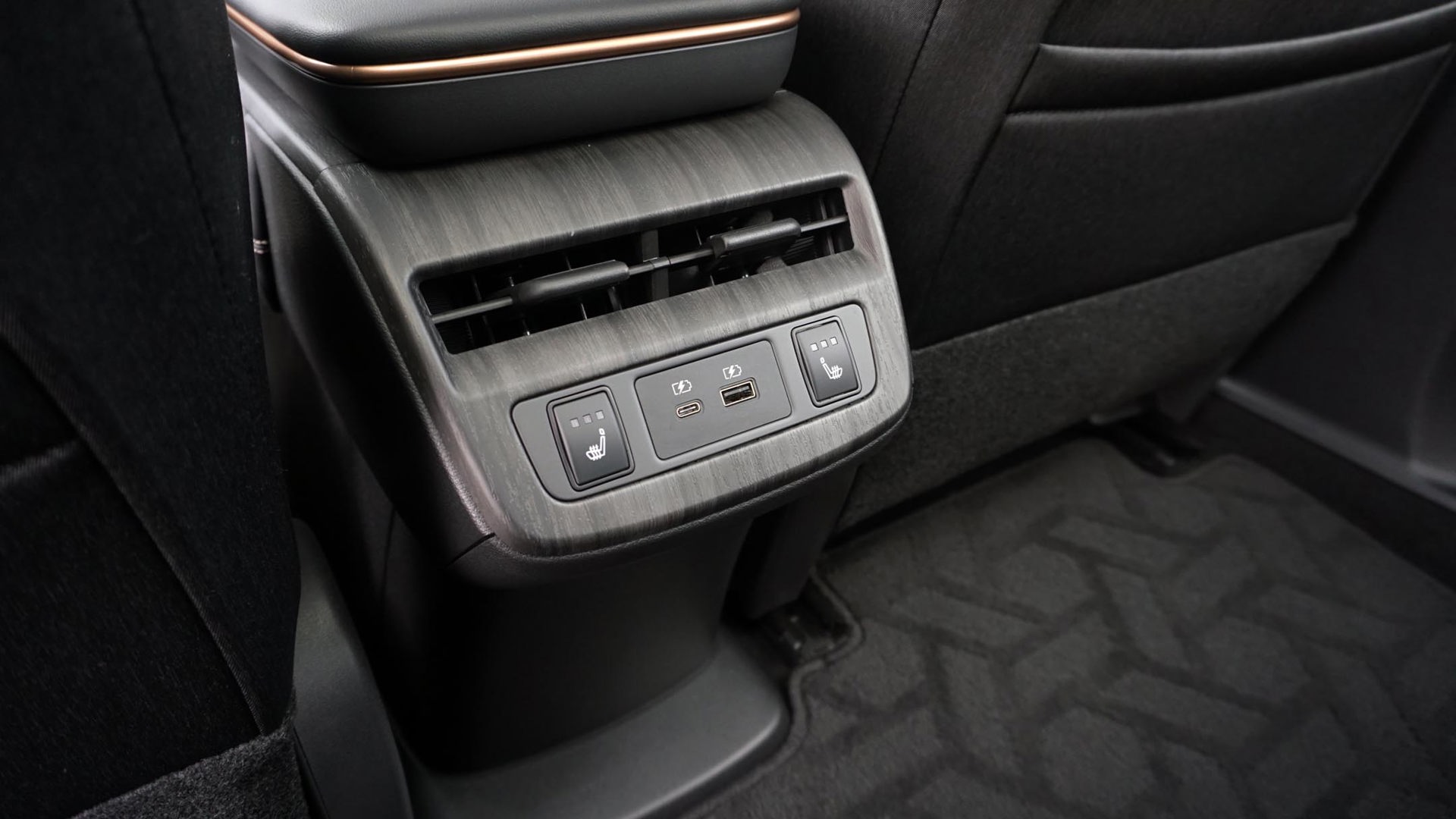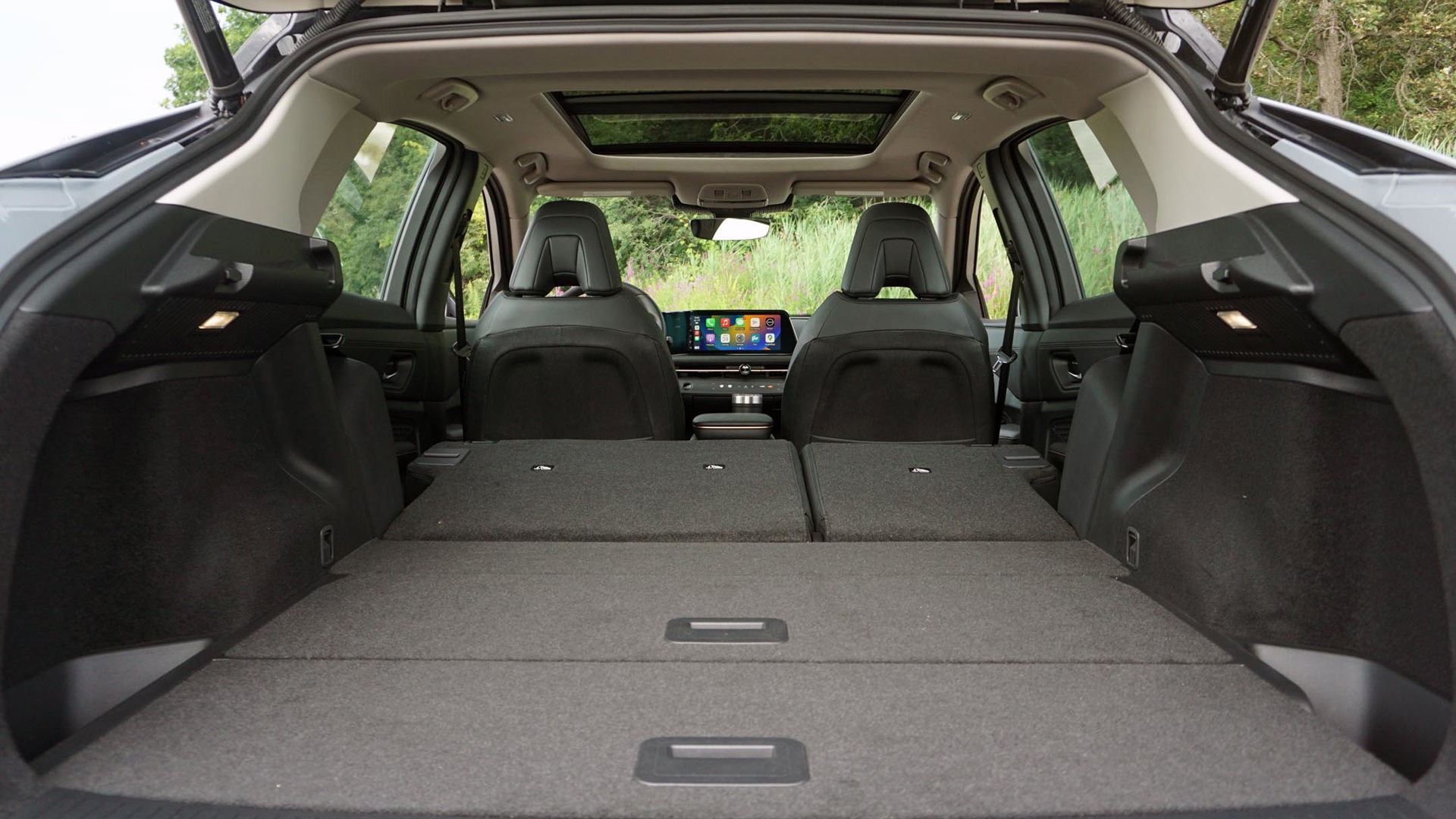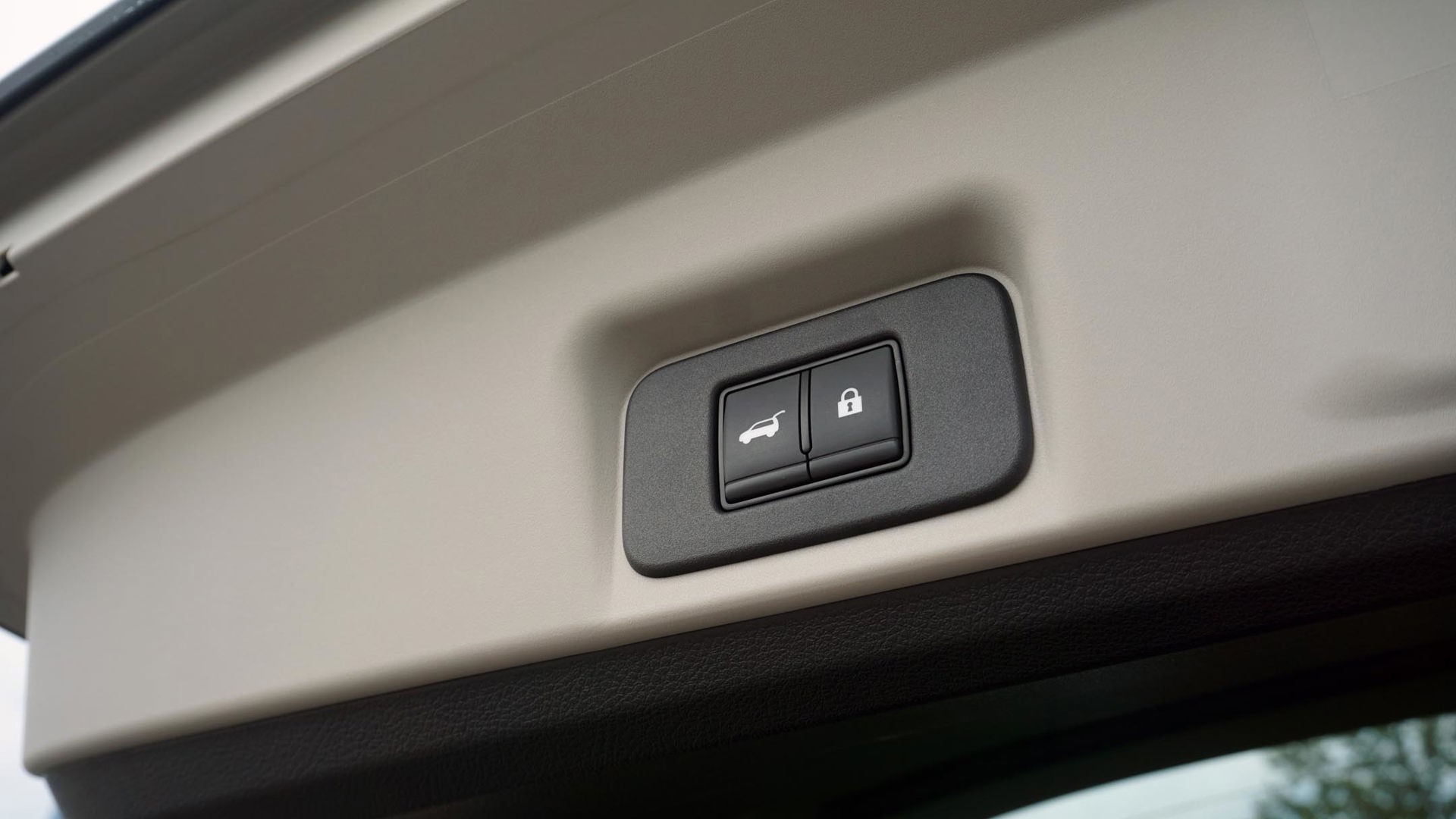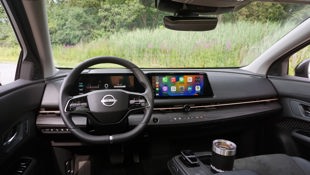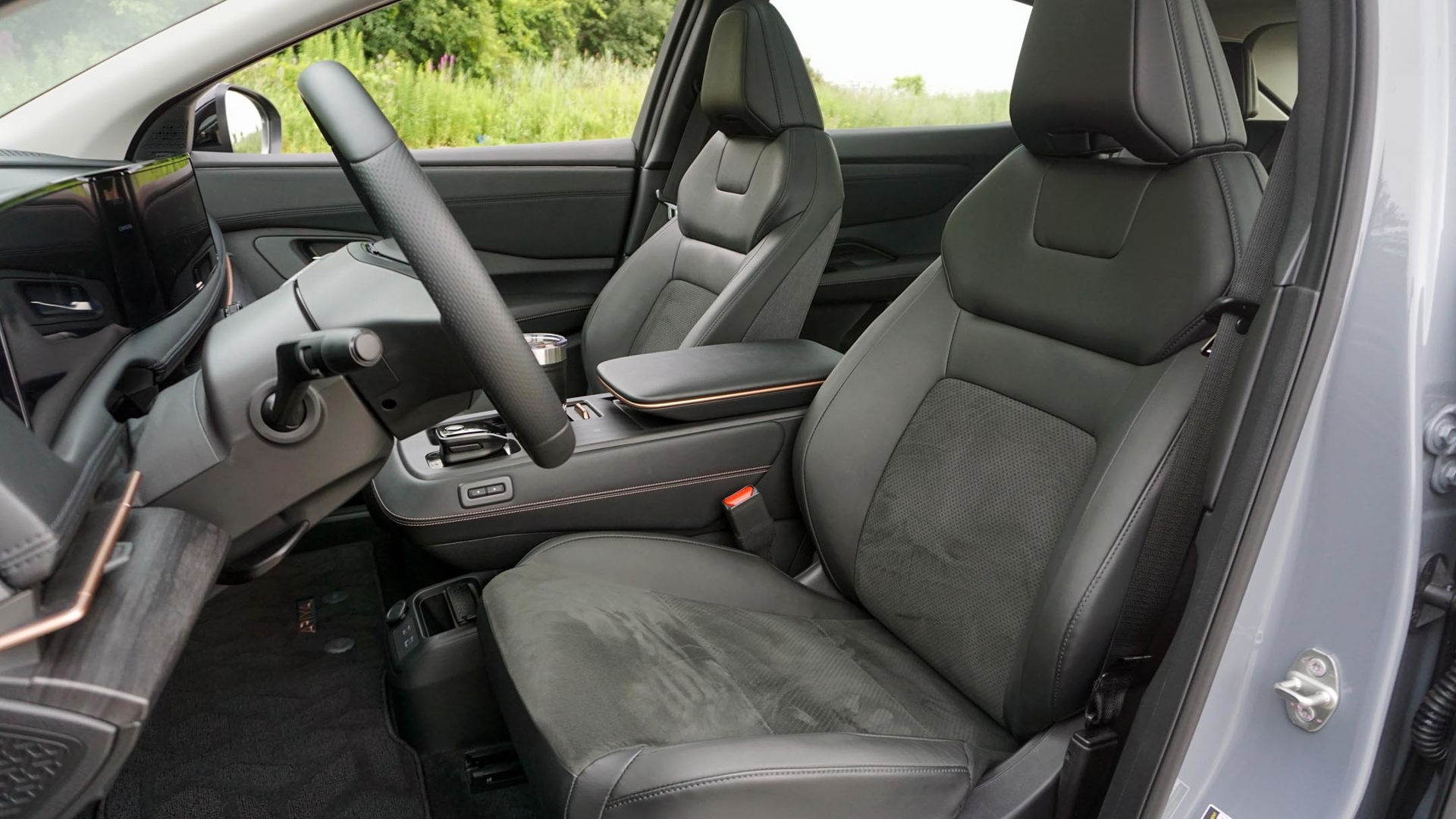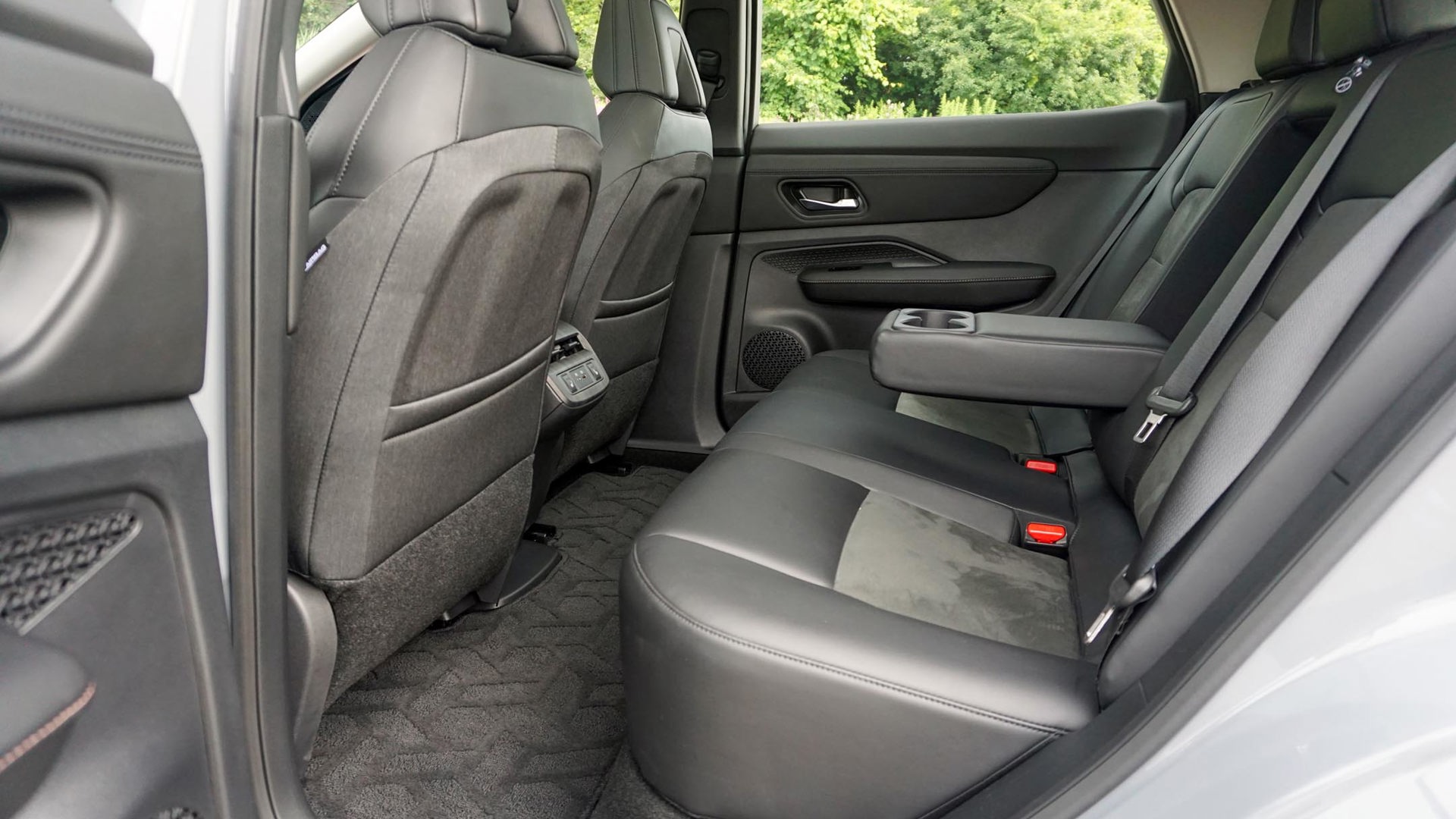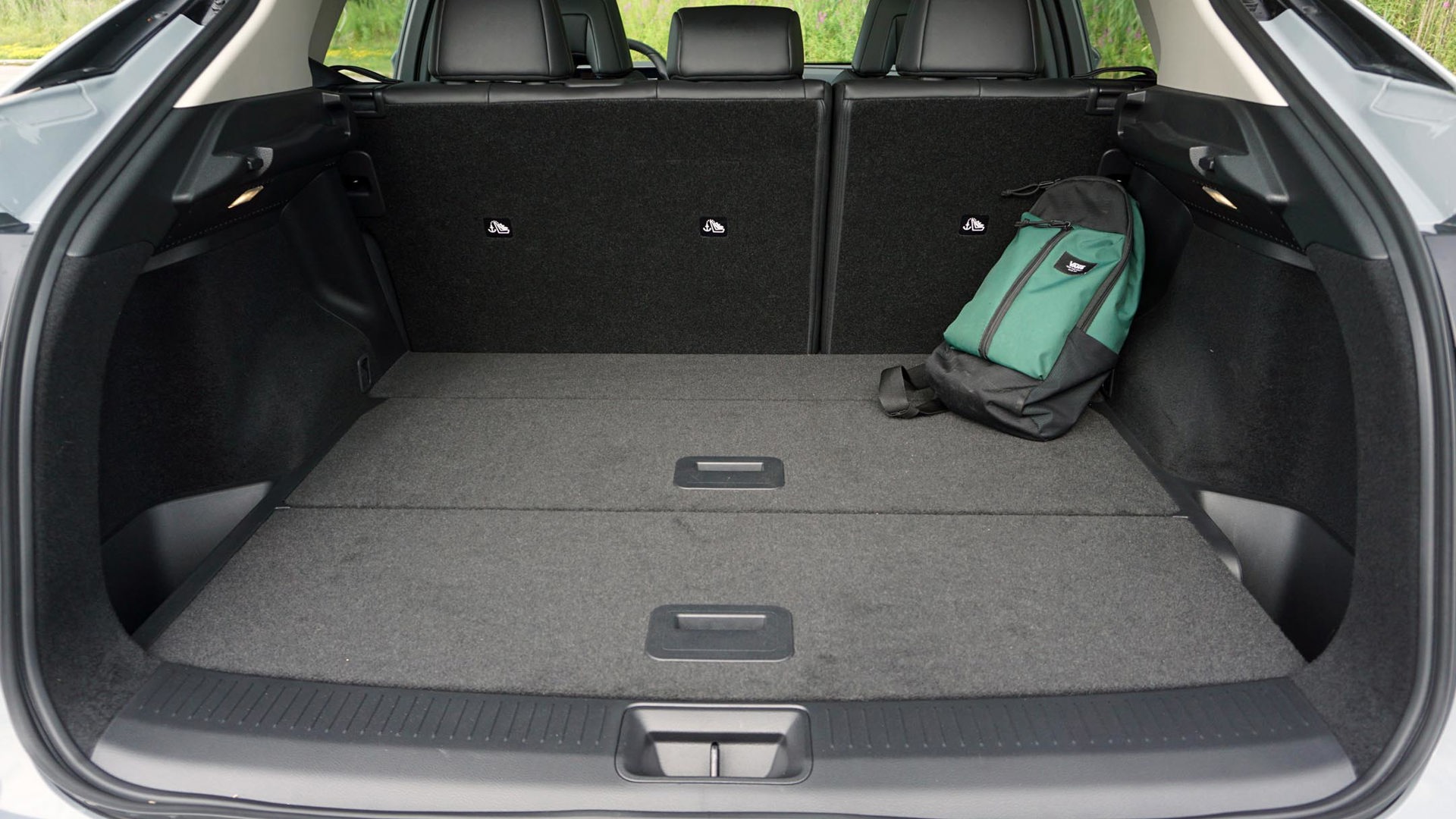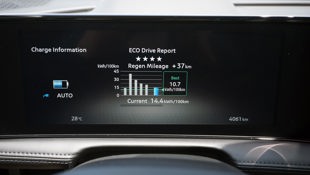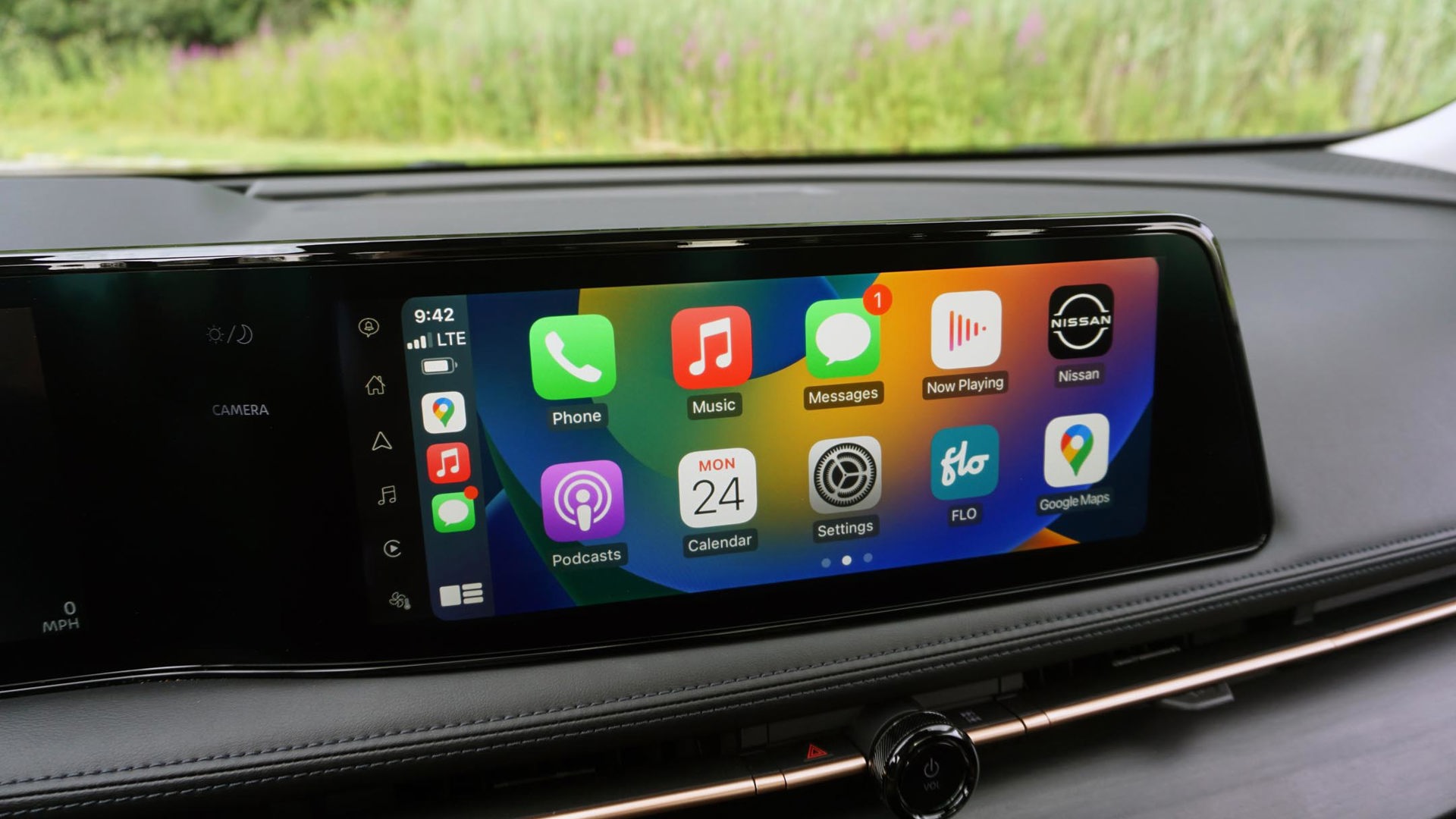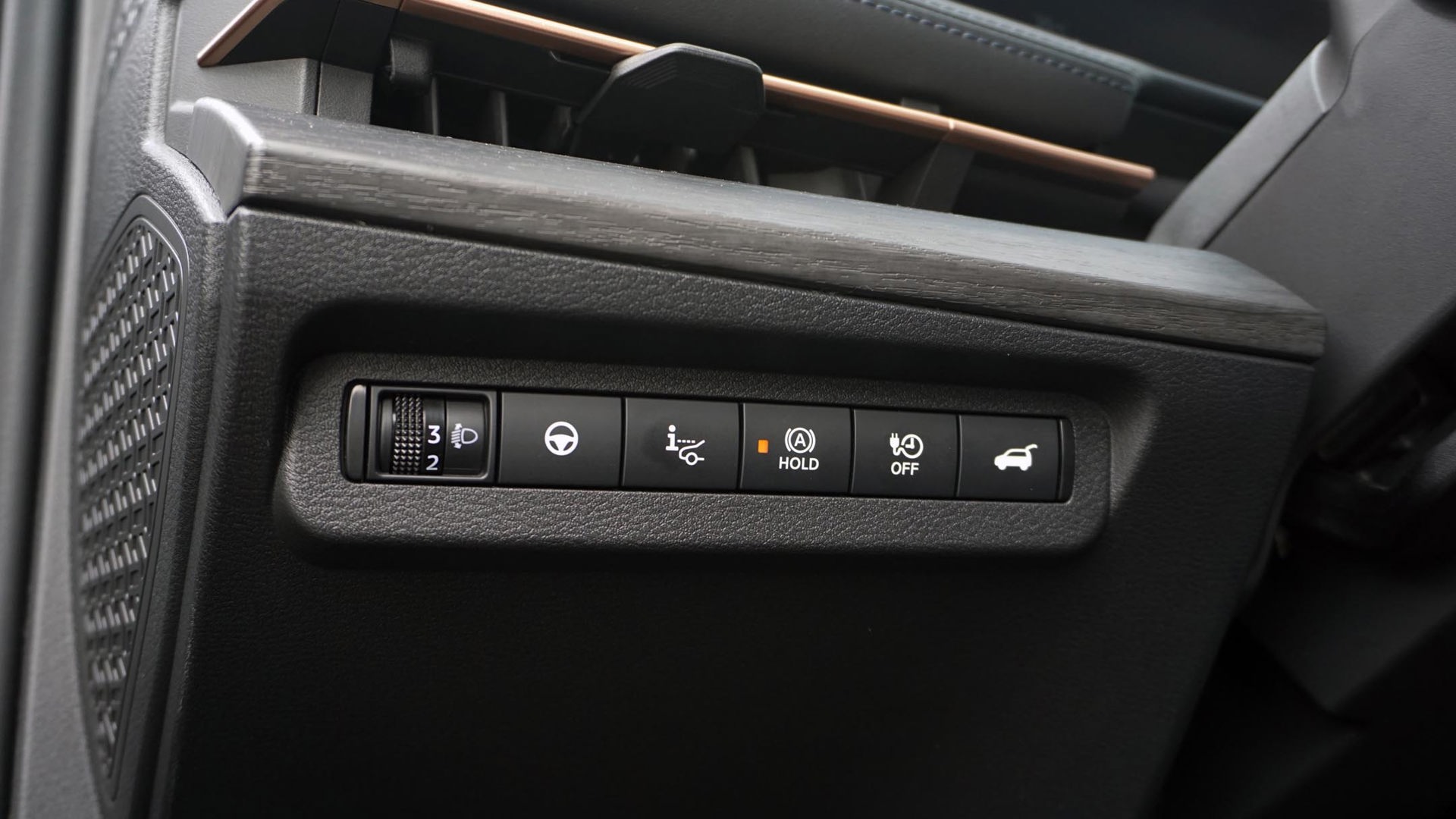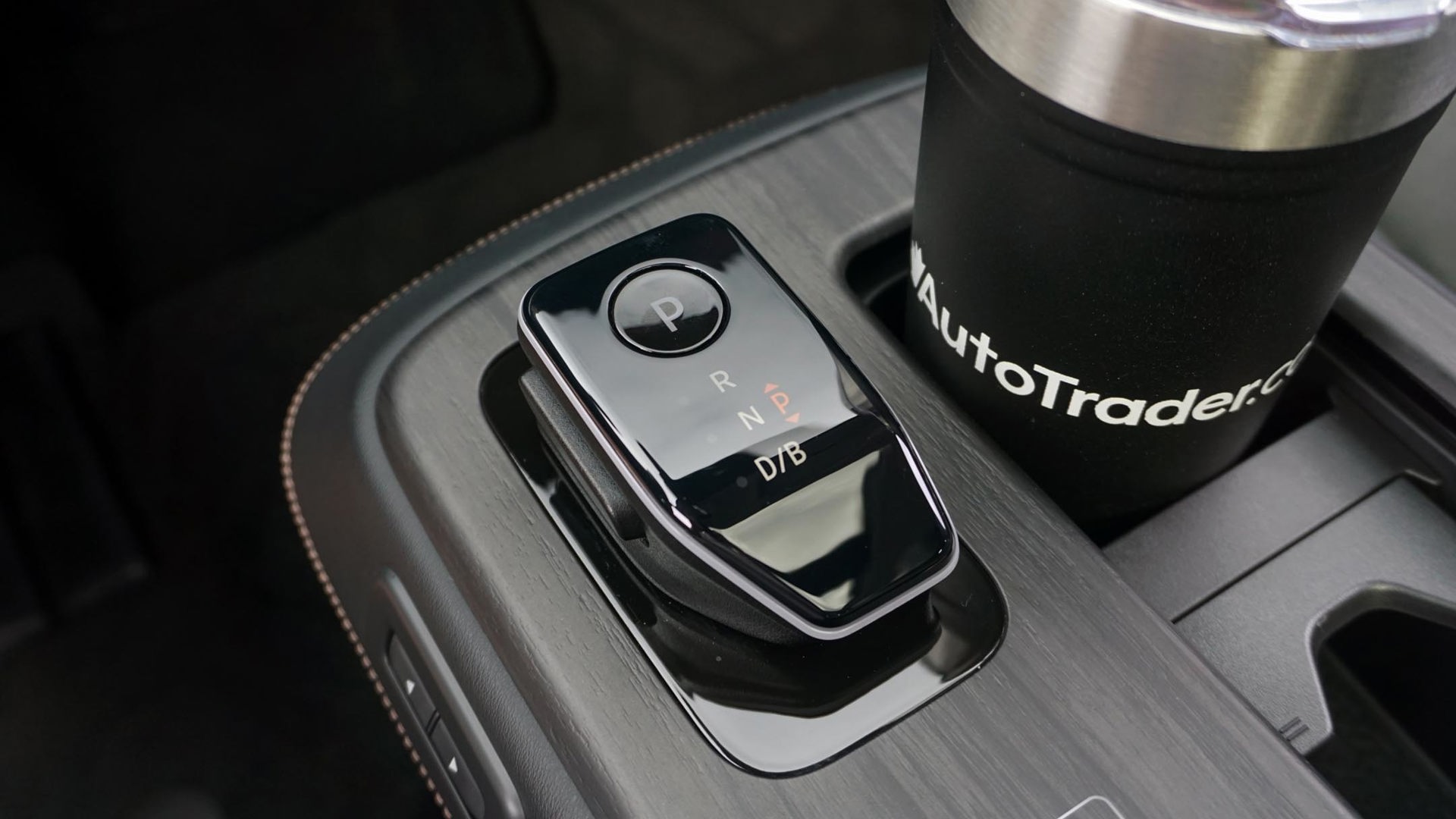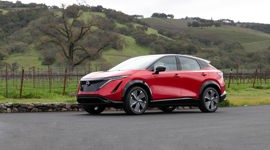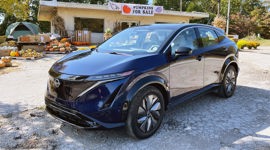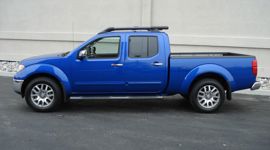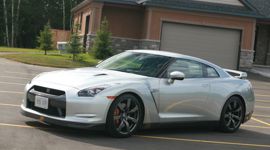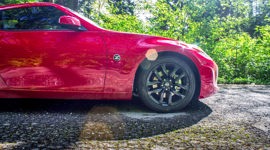 AutoTrader SCORE
AutoTrader SCORE
-
STYLING8/10
-
Safety9/10
-
PRACTICALITY8/10
-
USER-FRIENDLINESS8/10
-
FEATURES10/10
-
POWER9/10
-
COMFORT9/10
-
DRIVING FEEL7/10
-
FUEL ECONOMY10/10
-
VALUE6/10
Believe it or not, the auto industry is still in the early adoption stage of electrification.
The technology’s expensive and so are the vehicles, while mass apprehension has meant sales aren’t picking up at the pace they need to in order to hit the government’s ambitious sales targets. What role Nissan’s newest all-electric entry will play in paving the way towards an emissions-free future remains to be seen, although its key specs suggest it has a fighting chance.
While its pricing isn’t exactly a bargain, the 2023 Nissan Ariya delivers in other important areas that make it feel like much more than this automaker’s first attempt at electrification.
Fuel Economy: 10/10
OK – the Ariya isn’t Nissan’s first electric vehicle (EV); that title belongs to the Leaf, which introduced electric motoring to the masses all the way back in 2010. While sales never exactly exploded, it’s safe to assume plenty of the lessons Nissan learned from that lovable little hatchback have been applied to this larger crossover.
Chief among them is range; it matters. In fact, according to a 2022 KPMG study, some 79 per cent of Canadians won’t consider an EV unless it can travel at least 400 km on a full charge. While that figure runs counter to the capabilities of the Ariya’s smallest battery, the 91-kWh (87-kWh usable) unit in this tester is up to the task and then some.
Paired with a single motor, this Engage+ version’s ability to travel an estimated 465 km on a full charge was handedly exceeded, with nearly 540 km of range in real-world testing. Equally impressive was its week-long combined electrical consumption rate of just 17.5 kWh/100 km over the course of a little more than 400 km, including plenty of highway driving.
Practicality: 8.5/10
Sending output to its front wheels alone is sure to take this Ariya off of some Canadians’ shopping lists, but fear not: all-wheel drive is available (although it comes with a range penalty). Even so, don’t underestimate this version’s year-round usefulness – and certainly don’t underestimate the need for winter tires no matter how many wheels are powered.
Otherwise, the interior utility and usability afforded by electrification is on full display here. The flat floor throughout the cabin, as well as the dual glove boxes and motorized centre console, are just a few of the ways the space is made to work better than it can in a similarly sized internal combustion crossover because of all the mechanical components that have to be accommodated.
The big doors open wide for easy entry and exit all around, while forward visibility is excellent thanks to the low dash design and diving hoodline. While the rearward view isn’t as generous – blame the massive C-pillars, rear-seat headrests, and low roof – it’s easy enough to adjust to the narrow opening. The way the roof tapers towards the back also means there’s a hatchback-like 646 L of space behind the rear seats, although it’s more impressive in practice than it is on paper.
User-Friendliness: 8/10
Nissan has wisely – although not entirely – eschewed the gimmickry associated with electrification here. A power button must still be pressed to turn the Ariya on and off, while a gear selector like the one found in the gas-powered Rogue sits atop the centre console. (Just like in that sibling crossover, the one here feels cheap and flimsy.)
Where competitors like the Tesla Model Y and Ford Mustang Mach-E have the vast majority of their features and functions stashed within their touchscreens, the Ariya’s climate system can still be manipulated using dedicated controls. However, the touch sensors embedded beneath plastic trim that looks like wood can be finicky, with a delay when pushed and held, for example, and a lag when tapped repeatedly.
There are two more such sensors on the centre console – one to engage the so-called “e-step” function, and the other to cycle through the three available drive modes. The former is a major disappointment, as it amps up the regenerative braking but not to the point that full one-pedal driving is enabled; instead, the mechanical brakes must be used to bring the Ariya to a stop.
Driving Feel: 7.5/10
With or without e-step or automatic brake hold engaged, the Ariya has a tendency to rock forward and back when coming to a complete stop. While not quite unnerving, the way it pitches no matter how gently the brakes are applied is something noted by members of online owners forums, suggesting it’s not a problem with this test unit alone.
Beyond that bizarre sensation, this EV drives a lot like it looks as though it might: with a relaxed demeanour that’s not especially exciting, and that’s fine. It’s those easy-driving ways that epitomize the Ariya’s appeal, with a refreshing lack of overcomplication. While the steering has something of a dead spot on-centre, there’s a creamy smoothness to the way the system operates, matching well with this crossover’s all-around manners.
Power: 9/10
Likewise, output isn’t exactly abundant in this single-motor configuration, but it’s ample for everyday driving. At 238 hp and 221 lb-ft of torque as-tested (sticking with the smaller battery reduces the former to 214 hp), this front-wheel-drive EV zips along exactly as quickly as it should. Those seeking more output – but again, less range – can opt for all-wheel drive, with 389 hp and 442 lb-ft of torque when paired with the big battery.
Comfort: 9/10
Set in eco mode, the drive is docile enough that the Ariya would make an excellent setting for mobile therapy sessions. OK, not quite, but considering the quietness of the cabin combined with the laid-back disposition and (mostly) supple ride quality, it would work in a pinch.
As is typical amongst EVs like this one, the rigid and heavy battery pack that spans the floor here is difficult to hide. Combined with the low-profile tires wrapped around standard 19-inch wheels, curb cuts, potholes, and pressure cracks are noticeable at low speeds. But then the suspension damping is agreeable enough to make most drives perfectly uneventful, particularly at cruising speeds.
Styling: 8/10
Beyond being quiet the cabin is downright cozy, while the seats up front might be the best execution yet of Nissan’s so-called zero-gravity buckets. Better still, they look good, too, as does the rest of the interior. The subtle bronze accents up front are pure class – so much so, in fact, that it’s a shame there aren’t more in the back to match.
The overall styling makes the Ariya stand out from other vehicles on the road, electric or otherwise, with a sedan-like shape minus the trunk. Finished here in Boulder Grey paint with a contrasting black roof ($950), it looks more athletic and elegant than the similarly sized Volkswagen ID.4, not to mention the Tesla Model Y, with the lighted Nissan badge up front an excellent addition – and it’s standard, too.
Features: 10/10
Beyond the battery packs and how many wheels get power, even the cheapest Ariya trim gets a built-in battery heater and a 7.2-kW onboard charger. Hooking up to a DC fast-charger, meanwhile, the Ariya can reach maximum speeds of 130 kW (in ideal conditions, of course) and can make the jump from 10 to 80 per cent in 35 to 40 minutes, depending on battery size.
Other standard equipment across the lineup includes heated seats front and back, a heated steering wheel, power-sliding centre console, twin 12.3-inch displays (one touch-enable for infotainment), wireless Apple CarPlay, wired Android Auto, integrated Amazon Alexa assistant, and two USB ports in each set of seats, one A type and the other C. Of course, equipment gets better as the price increases, with leather upholstery, wireless charging, and more available higher in the lineup.
Safety: 9/10
Regardless of price, an entire suite of advanced safety and driver-assist systems is included. That means forward collision warning, automatic emergency braking with pedestrian detection, lane departure warning and keeping assistance, low-speed reverse automatic braking, blind-spot monitoring with rear cross-traffic alert, and navigation-link adaptive cruise control. The Evolve+ trim tested here also comes with extras like a head-up display system and surround-view cameras in addition to the back-up one that’s mandated by the government.
The systems work well, too, including the adaptive cruise that maintains a reasonable distance from preceding traffic. It’s also smooth in its response to changing speeds rather than feeling erratic the way other systems out there can. If anything it’s the lane-keeping that’s a little too sensitive, prompting the driver with warnings should anything but a firm hand be placed on the wheel.
Value: 6/10
There’s no question that the Nissan Ariya is well packaged with desirable features throughout the lineup, with amenities like heated front and rear seats standing out as rare. The real-world range of the front-wheel-drive Evolve+ version tested here is commendable, too, and it’s enough to make the usual anxiety that comes with it almost unthinkable.
Alas, this EV is expensive, plain and simple. The cheapest of the bunch – the Ariya Engage – has a starting price of $52,998, while the price of the Venture+ balloons to $59,498 thanks to its big battery pack. The Evolve+ trim that’s the sweet spot in the lineup in terms of features and the big battery pack is priced at $64,998, while the same trim with the smaller 66-kWh battery and all-wheel drive rings in at $60,598. Then there are the Platinum+ and Premiere trims that combine the dual-motor setup with the 91-kWh battery; those are priced at $69,198 and $69,998, respectively. (Meanwhile, freight adds $2,095 to all of them, and it’s not negotiable.)
While every version of the Ariya sold in Canada qualifies for the full $5,000 federal rebate off the purchase price or a four-year lease, the same is true of the Volkswagen ID.4. That all-electric VW is cheaper, too, with a similar trim to the Ariya tested here ringing in at $56,445 before freight and tax. (In fairness, that version of the 2023 ID.4, along with the base trim, were both sold out in Canada at the time of this writing.)
The Verdict
And so it ends almost exactly where it began. The 2023 Nissan Ariya is an impressive EV that comes decked out with features and delivers lots of real-world range; but looking at the competitive landscape, it’s probably overpriced by $5,000 or more across the lineup.
What that means is different to each prospective owner out there, but those looking for an affordable emissions-free family hauler won’t find it here. Those who can look past the pricing – or at least live with it – will find a smooth and easy-driving EV that can travel farther than advertised.
| Engine Displacement | 178 kW |
|---|---|
| Engine Cylinders | Single electric motor |
| Peak Horsepower | 238 hp |
| Peak Torque | 221 lb-ft |
| Fuel Economy | 2.2 / 2.6 / 2.4 Le/100 km; 465 km est. range; 87 kWh battery |
| Cargo Space | 646 / 1,691 L seats up/down |
| Model Tested | 2023 Nissan Ariya Evolve+ FWD |
| Base Price | $64,998 |
| A/C Tax | $100 |
| Destination Fee | $2,095 |
| Price as Tested | $68,143 |
|
Optional Equipment
$950 – Boulder Grey paint w/black roof, $950
|
|

